Exactly What to Do in Amsterdam (For First Timers)
When I was leaving for my last trip to Amsterdam, I had multiple people (mostly older Americans) say some version of “oh, going to be doing some partying, are we?”
Looking back on those comments, it’s a little sad that a city as rich in history as Amsterdam, the centerpiece of the Dutch East India Company (who sort of created the idea of “owning stock” in a company and our current form of capitalism) and one of the biggest powers in Europe in the 17th Century, is reduced to merely being a party destination.
And it’s true to some degree that Amsterdam is well known as a party destination, a reputation that the city is frantically trying to backpedal from because, well, being a party capital of Europe probably isn’t great for residents of a city.
On my latest trip to Amsterdam, I took the time to spend 10 days in the Dutch capital to dive a level or two deeper below the surface.
I’m glad I did that because the story of Amsterdam is a rich one, with all sorts of quirks and stories that I had never heard on any of my previous, shorter visits.
Amsterdam is a really interesting city from a historical and cultural perspective, and it probably gets overshadowed in that department by other European cities like Rome and Paris.
It has been known as a bastion for tolerance for centuries, and that tolerance of different people and beliefs has led to a diverse city of interesting ideas that, to be honest, seems like a truly lovely place to live.
In this guide to what to do in Amsterdam, we’re not going to give you a list of every single museum, park, square, and church that you could possibly see in Amsterdam.
Instead, we’ll offer you a blend of the main attractions in Amsterdam – what they are, some brief historical context, and how to see them – but we’ll also give you some of our other favorite things to do in Amsterdam all based on our own personal experiences exploring the city.
Armed with that (and our guide to planning an Amsterdam itinerary), you’ll be ready to plan a trip that will go a level deeper than most and learn about the different aspects of Amsterdam’s history and culture that have shaped the city as we know it today over the many centuries it has been in existence.
Learning is our favorite part of travel, which you’ll probably realize as you read this guide.
Sound good to you? Let’s get into it.
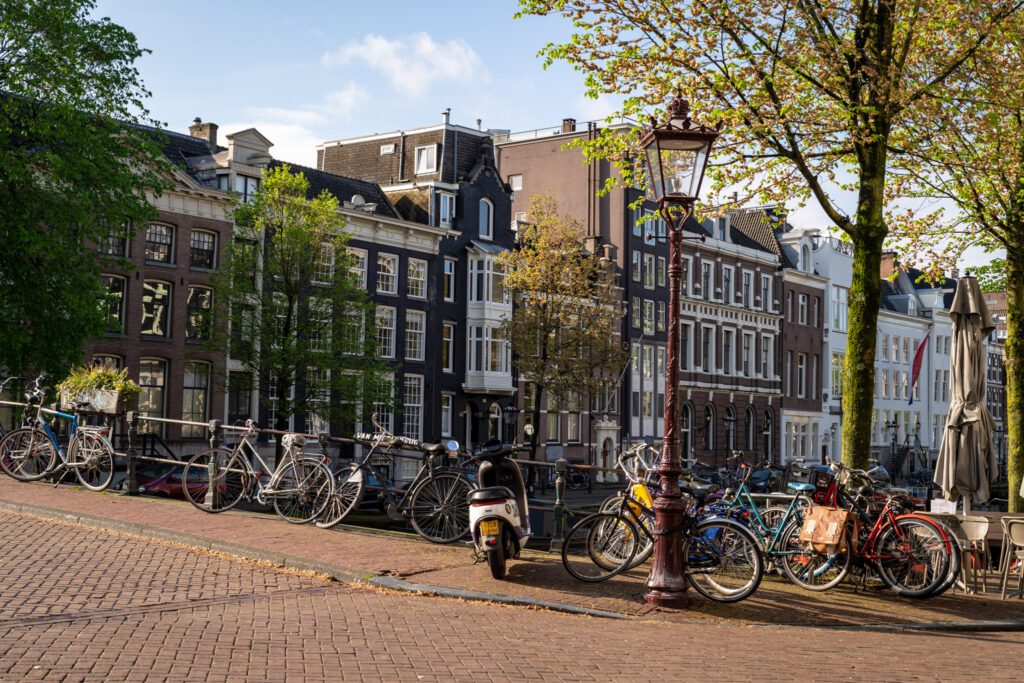
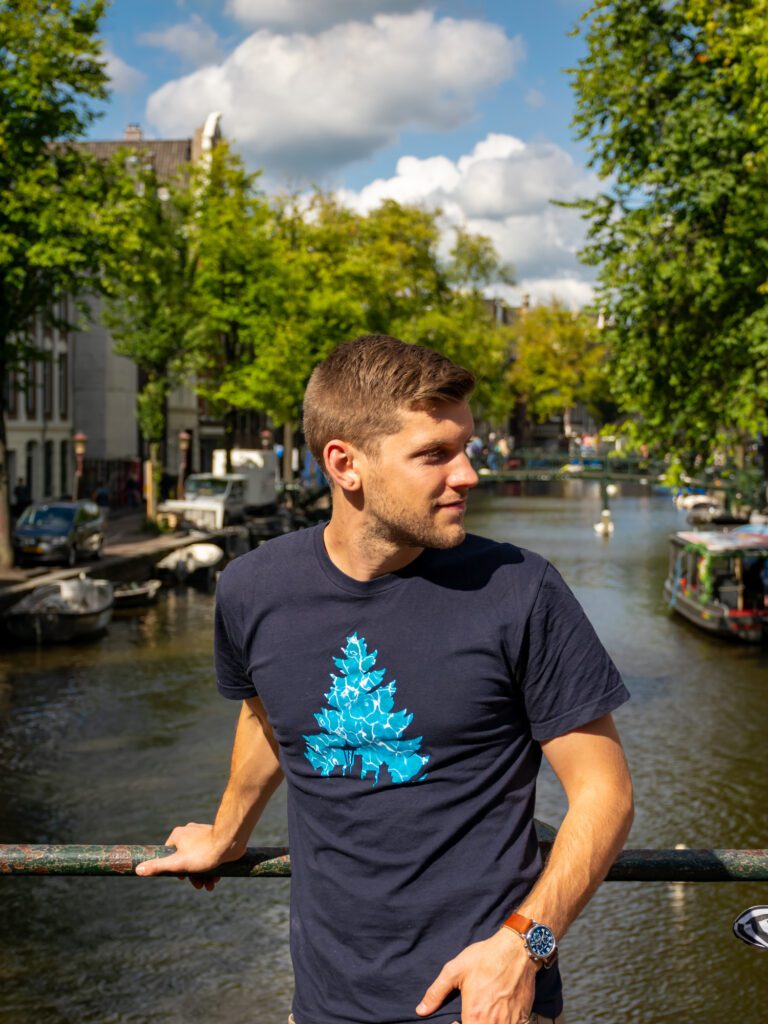
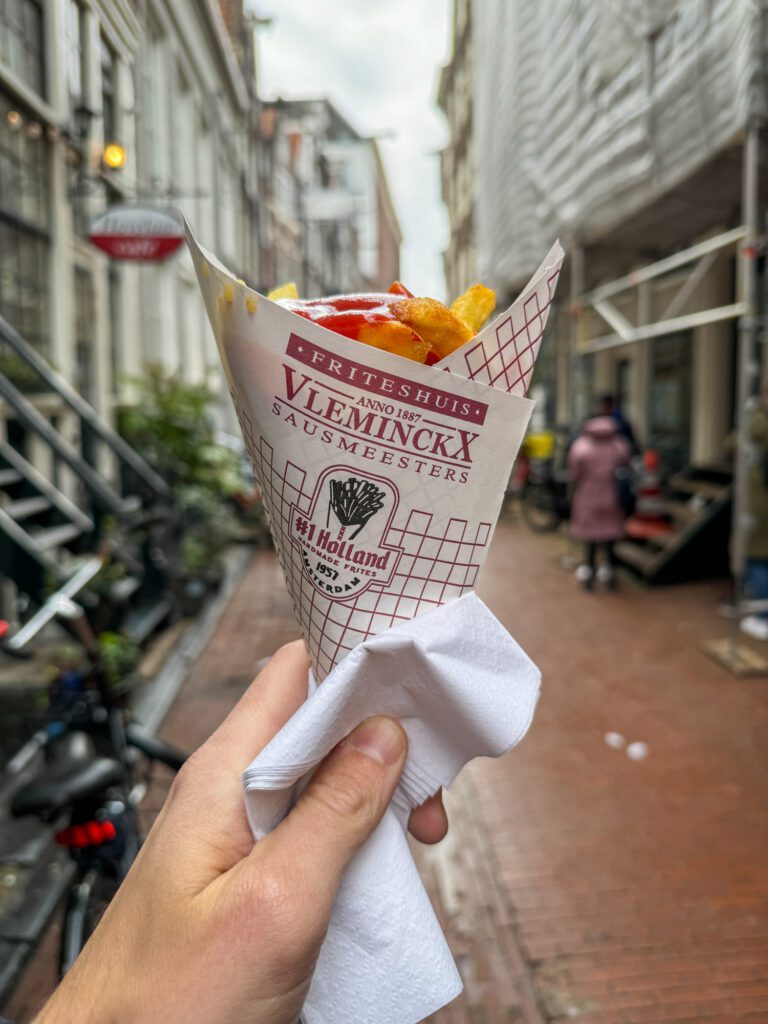
Disclaimer: Some of the links in this post, like hotel links, are affiliate links, meaning at no additional cost to you, we make a little bit of money if you click through and book. That being said, we would never recommend something to you that we don’t stand behind 100%.
Get Oriented with a Walking Tour
My favorite thing to do on my first day in a new city is a walking tour with a local guide. I view this as building a strong foundation for the rest of the trip because they give you three important things.
First, you get a crash course in history and culture, which is a valuable baseline that will make the rest of your trip more enjoyable.
Second, you get to spend a few hours with a local who will give you all sorts of tips about what to eat, drink (and see), and specifically where to find the best version of said things.
Last, but not least you’ll discover places that you definitely would never have found on your own.
We always do a walking tour on our first day in a city, and Amsterdam was no different.
However, I’ve come to loathe the free walking tours that you’ll see around the city (and other cities in Europe) for a couple of reasons.
One, they’re not free – they’re tip based, and you usually end up paying €10-20 per person anyway.
Two, they’re almost always led by people who are not actually locals.
Three, they’re not big on storytelling, and it’s more like a recitation of a Wikipedia page than actually getting to know the city.
As a result, it’s always always always worth paying for a walking tour, and I have two specific recommendations for Amsterdam. AND I’ve done them both myself.
The first is a more traditional walking tour with With Locals, another of my favorite tour companies that covers the highlights and hidden gems (like the headquarters of the Dutch East India Company!) in the city center.
With Locals is unique because they only do private tours, which means they’re highly customizable and can be tailored to your interests (e.g. history, food, or both!).
My favorite part is that you choose your local guide, and they always have a little blurb that tells you their background and interests and sometimes have a video introduction for you to get a sense of the vibe they’re bringing to the table.
It’s more like a local friend showing you the city through their eyes than a traditional walking tour, and I’ve used them in five or six different cities and had great experiences in almost all of them.
We first did a tour with them in Lisbon, where we had an incredible guide (Isabella) who spent over three hours showing us Lisbon through her eyes, including where to find the best pastel de nata in the city, and that sealed our appreciation for With Locals.
The second is about as far from a traditional walking tour as you can get – the Humans of Amsterdam tour.
This tour is different from just about every walking tour in any city I’ve ever been to.
It spans four hours, and covers the important cultural and historical context you need for your trip along with practical information (like which “coffee shops” to look for).
Along the way, you’ll try Amsterdam’s best apple pie (it’s not the one you think), have two drinks (one at a Brown Cafe, one at a local microbrewery), explore the Jordaan and the Old City, and meet two different Amsterdam locals who give you a unique insight into life in the city (who are fairly compensated for their time).
As a guide, we had Sinead, an Irish expat who has called Amsterdam home for years, and she was a great storyteller as she attempted to explain to a group of mostly Americans the quirks of Dutch culture, language, and history.
It’s a little more expensive than most, but the level of storytelling about Amsterdam’s past and present as a bastion of tolerance, Dutch directness, and the Dutch entrepreneurial spirit (“we created capitalism, you’re welcome”) was on a completely different level than almost every single walking tour I have ever done.
I loved it, and think you will too. It’s an excellent tour that you WILL walk away from feeling like you’ve gained important insight into Amsterdam and how it came to be the thriving city it is today.
Take a Walk Along the Canals in the Early Morning
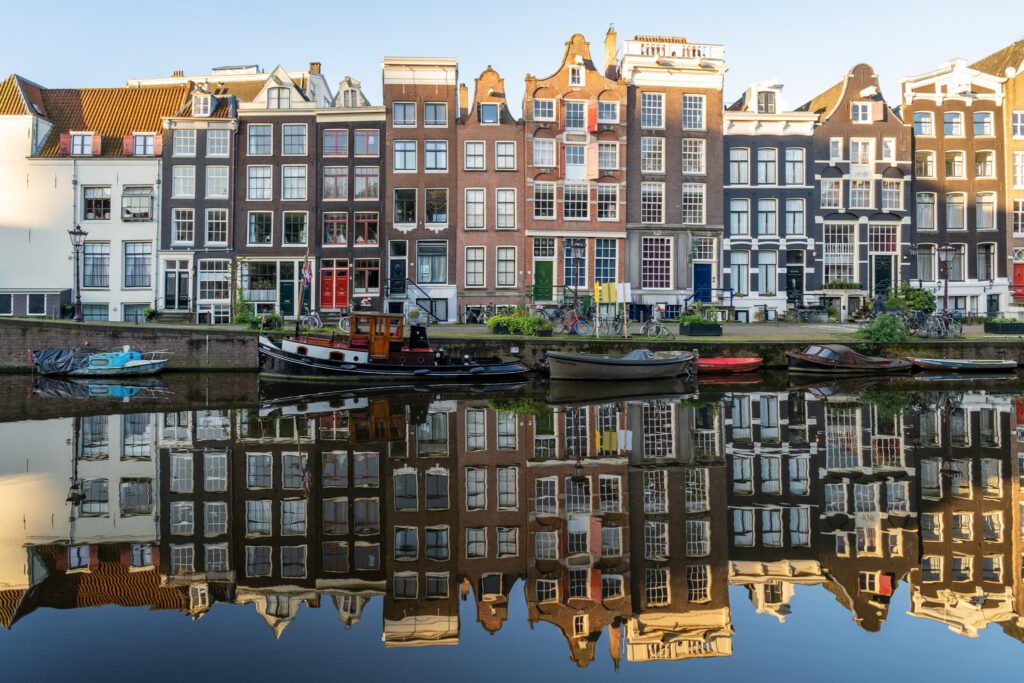
The Canal Belt – known as the Grachtengordel in Dutch – is our favorite part of the city, and is what immediately jumps into our minds when we picture Amsterdam in our mind’s eye.
However, as you’re walking around the center of Amsterdam during the day, you’re not likely to experience the serenity and beauty of the canals because this part of the city is packed to the brim with tourists between the hours of about 10am and 7pm.
The atmosphere is completely different in the early hours of the morning, when the streets are mercifully empty. Particularly on Sunday morning, when Amsterdamers seem to sleep in until at least 10am.
If you have the opportunity, we’d strongly recommend doing an early morning walk (or multiple early morning walks) to explore the canals at their best (and quietest).
Our absolute favorite parts of the canal belt are in the area called “9 Straatjes” – Nine Streets – which refers to a relatively small slice of the broader belt centered around a three street by three street rectangle where you’ll find some of the best canal views in the city.
This section of the city is part of Amsterdam’s first expansion in the 16th and 17th Centuries, when the Dutch Golden Age was beginning to transform the city from a small fishing and merchant village to the center of the biggest empire in Europe at the time.
The houses you see here – the tall, skinny houses that Amsterdam is well known for – were largely owned by wealthy families during that time period, and there are even some original buildings still standing (you’ll see the years on some of the buildings, which indicate when they were first built).
This entire section of the city was designated a Unesco World Heritage Site in 2010, which means that any development in the area must keep the original facade and footprint of the building (which is why you don’t see any crazy modern houses here).
Here’s a nice loop that takes you to a few of our favorite photo spots in the Grachtengordel.
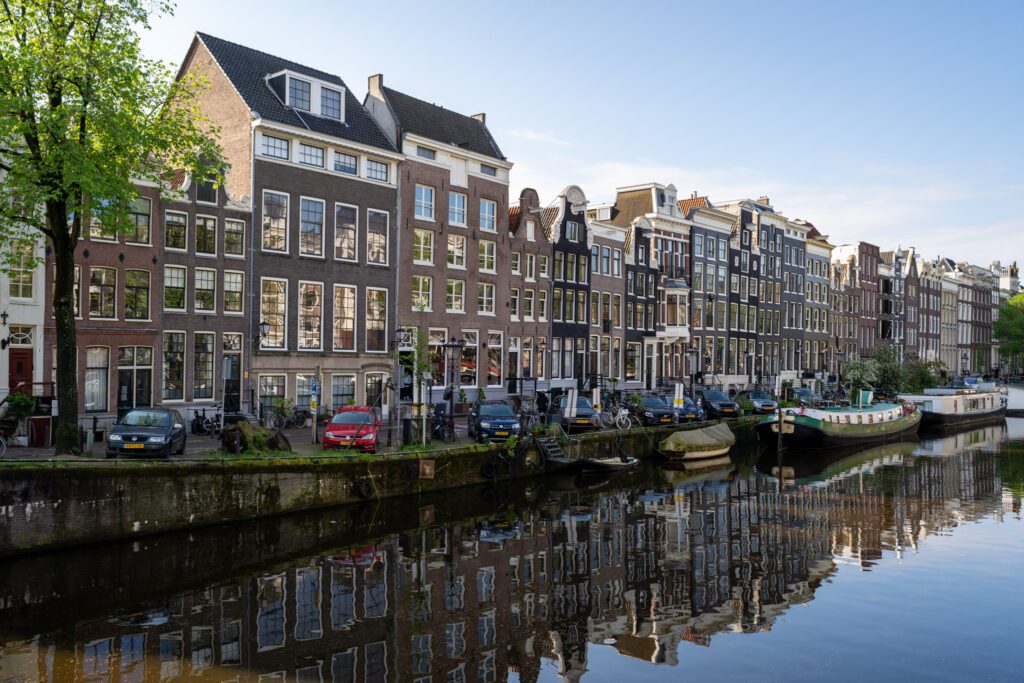
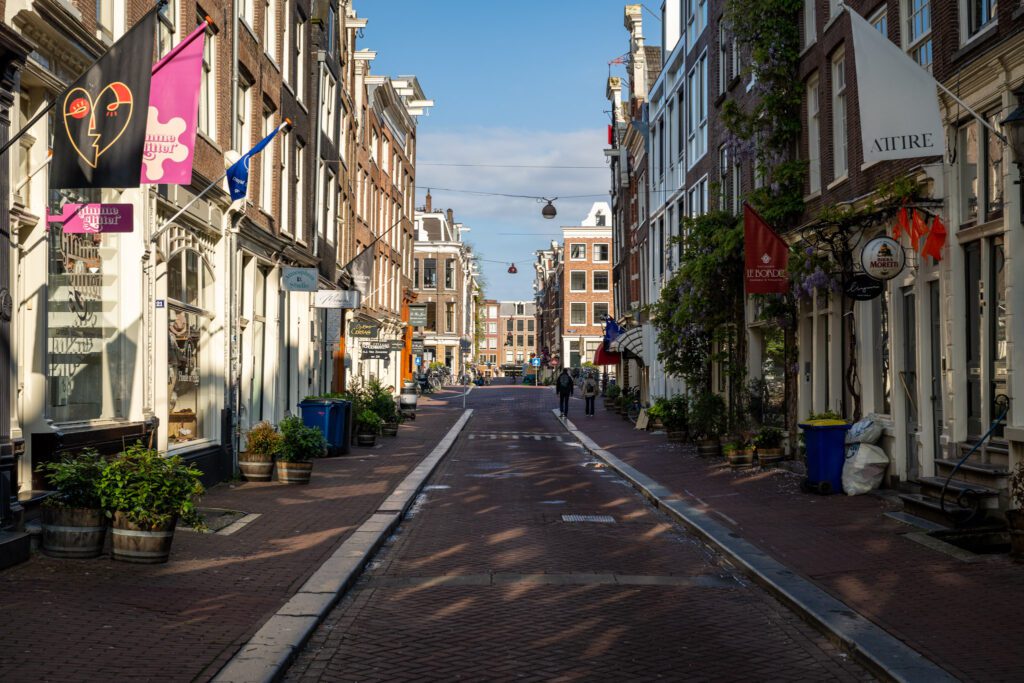
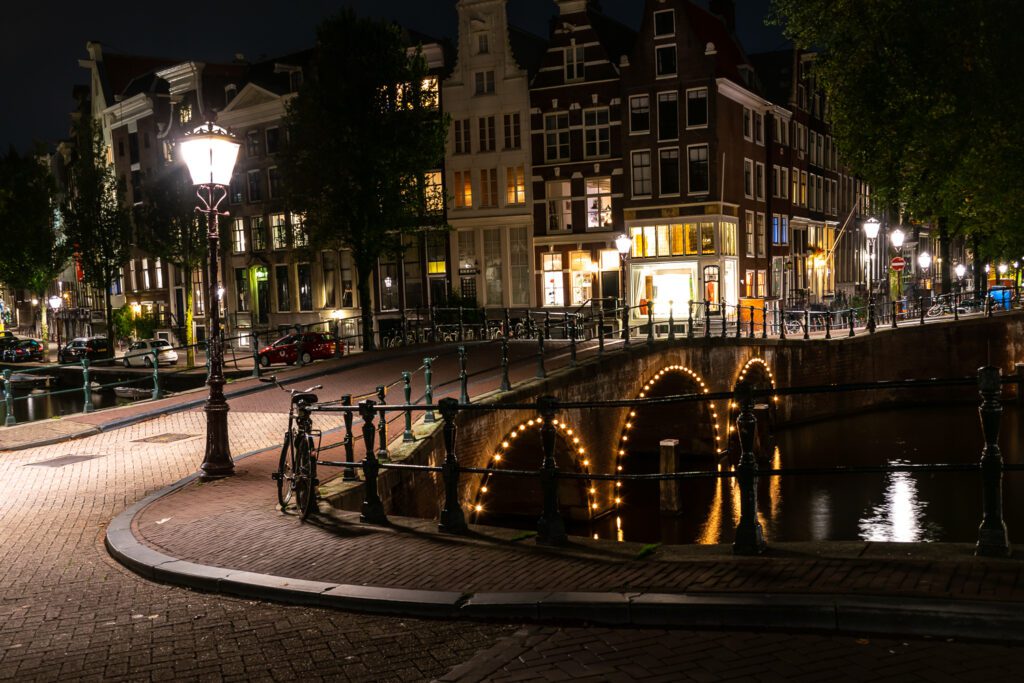
However, it is worth noting that this is not the only place to see beautiful canals.
We also really like the canals in the area known as Plantage to the east of the center (here on Google Maps), and there are far fewer tourists in that section of the city (which is where Matt stayed for the bulk of his latest trip).
Take a Canal Cruise to See the City from a Different Perspective
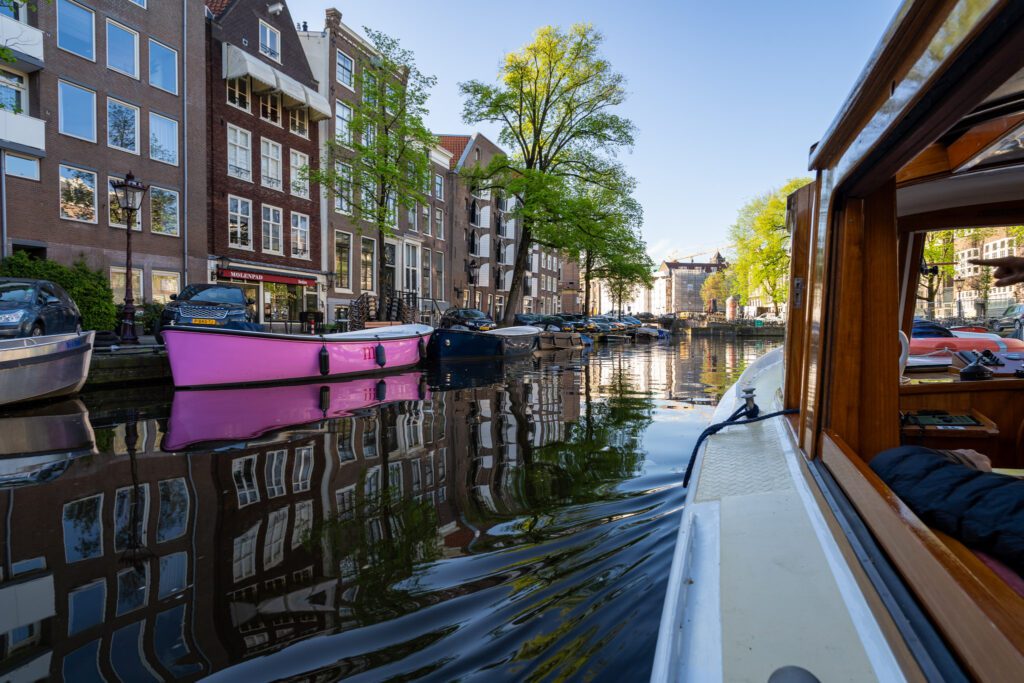
Look, I would say I was fairly against the idea of a canal cruise at the beginning of my latest trip to Amsterdam. Mostly because you see them clogging the canals throughout the middle of the day with Hard Rock Cafe logos on them, and they don’t look particularly pleasant to me.
However, as I’m sitting here writing at the airport before my flight home, it turned out to be one of my favorite experiences on my semi-extended stay in Amsterdam.
Several people – both fellow tourists I met along the way, and tour guides – recommended it because it’s a way to see the city from a completely different perspective.
So, about 7 or 8 days into my 10 day stay in Amsterdam, I finally got out on the water.
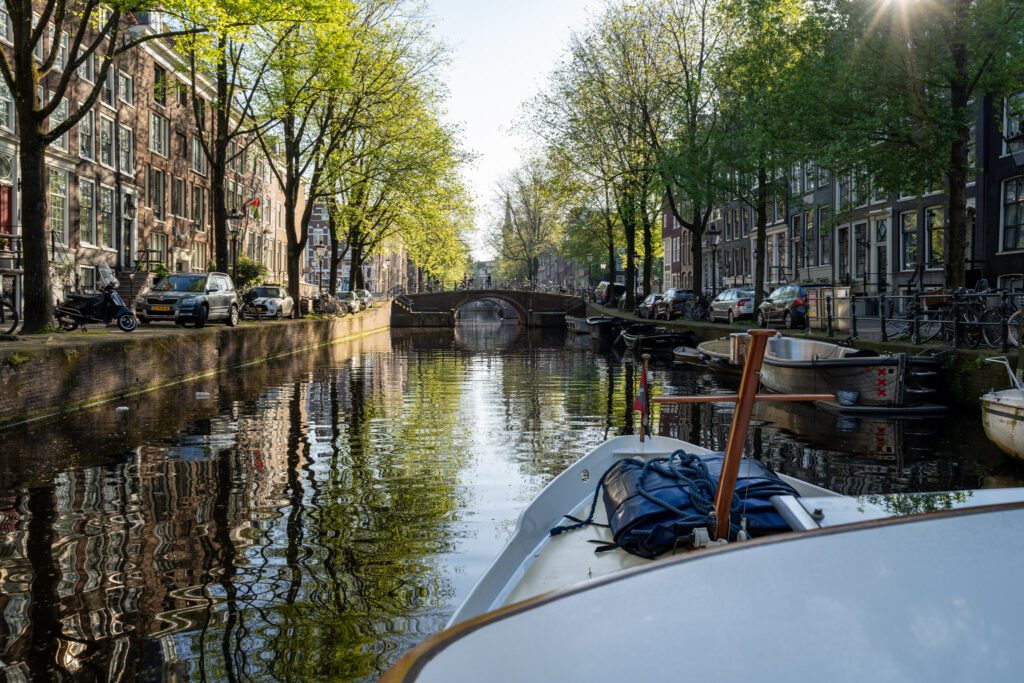
I was specifically looking for an early morning canal tour on a small boat, and I came across Captain Dave’s tour and booked it almost immediately (which is what I’d suggest you do as well).
We were literally the only tourist boat on the canals – we didn’t see a single other boat on the water during our entire trip.
On this tour, you’ll spend 90 minutes winding your way through Amsterdam’s historic canals, making a ring around the city center.
Along the way, you’ll interact with your captain (we got Dave himself, but he also has other captains sometimes) and learn about Amsterdam’s history and culture, which the canals are very much an important piece of.
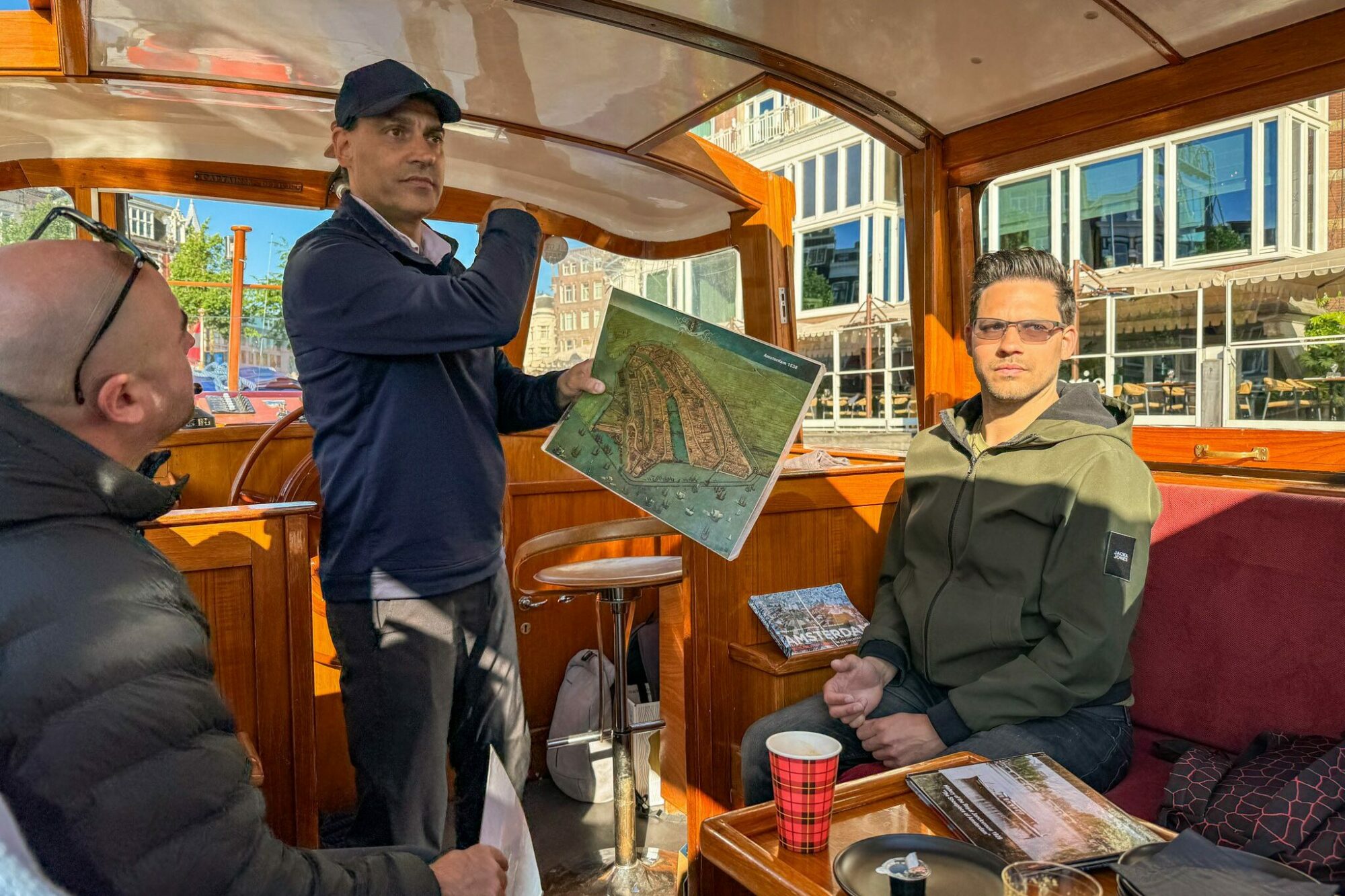
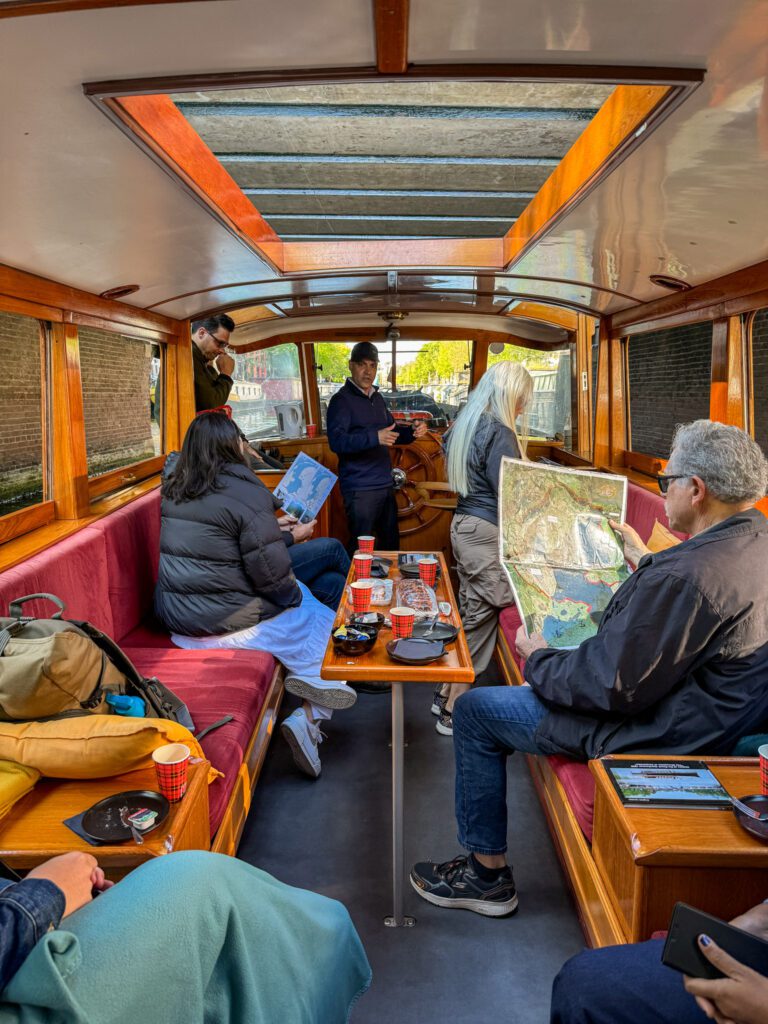
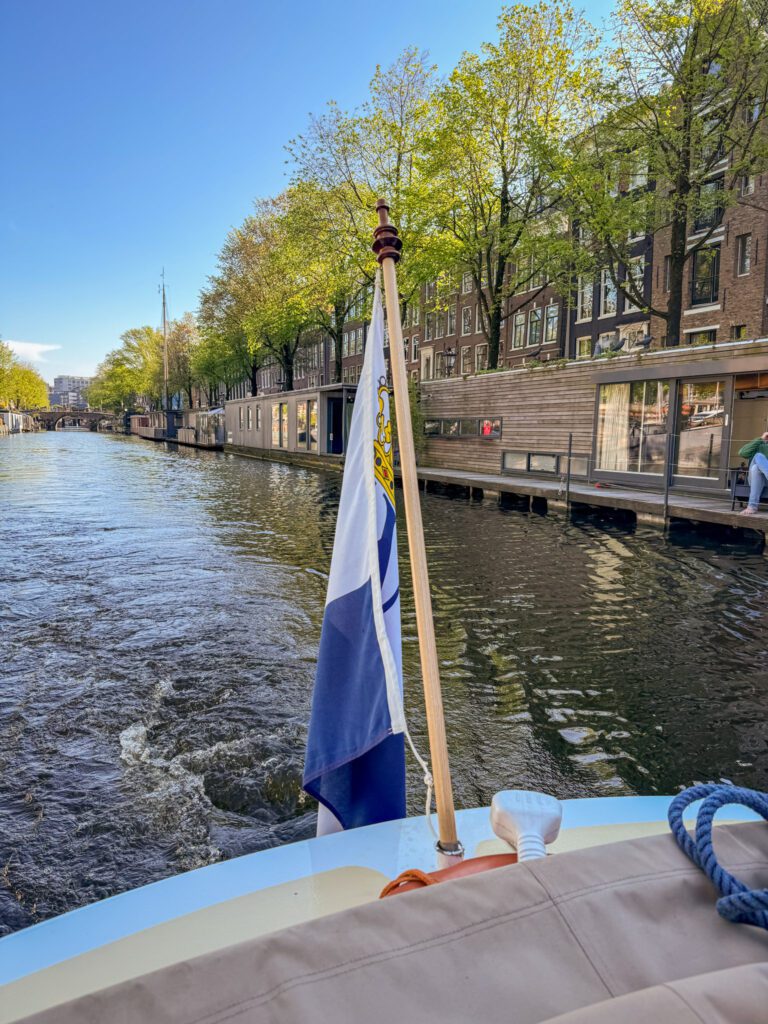
Oh, and you’re on a boat that has been converted to be fully electric, and was once used by the Dutch royal family.
There are a couple of reasons why this is a cool way to see the city.
First, you get a different view of the many houseboats, which are generally shielded from the street side, but all sorts of windows are open on the canalside to let in the natural light.
Second, you get some unique perspectives for photos, like the shot that includes seven bridges, which you wouldn’t be able to see from street level (at least not in the same way).
Third, you can cover a lot more ground on the water than on foot, so you can make a full loop around the city.
I was skeptical of this experience because of the “touristy” nature of the hundreds of different canal cruises out on the water, but Captain Dave’s cruise is a good example of how you can approach things that are “touristy” in a different way to have a similar but more unique experience (small group, early morning).
Learn About Dutch History at the Rijksmuseum
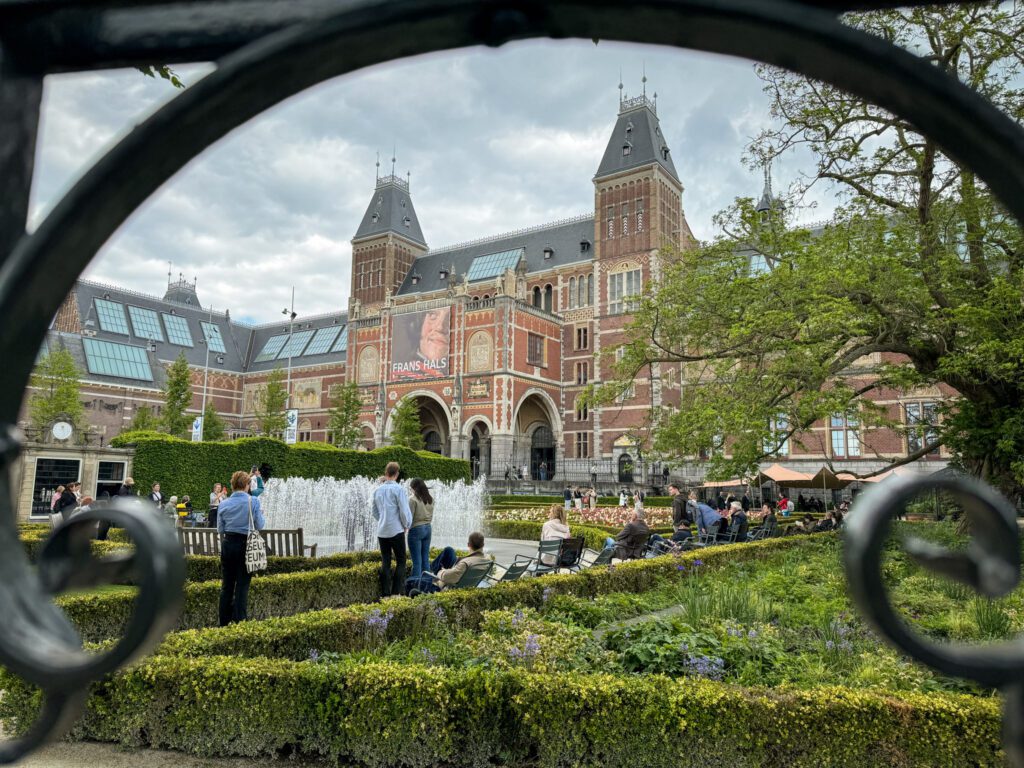
The Rijksmuseum is a collection put together by the government of the Netherlands, which you might have guessed by the name (you’ve probably seen “rijk” spelled as “reich” before in German, with much darker connotations).
I had been to this museum several years ago, and I actually didn’t know it was a collection put together by the state.
The building was constructed explicitly to hold this collection, and it has fun touches on both the interior and exterior with homages to famous Dutch artists and craftspeople.
This museum is great, and tells some fun stories about Dutch history through art. The museum is intrinsically tied to the Dutch Golden Age because, without it, almost none of this art would have been created.
If you’ve ever been to Florence, Italy, you have probably heard that art follows wealth, as rich and powerful people bring in the best and brightest artists to create art to show off to other rich people.
Florence got incredibly rich thanks to the silk trade, which led straight into the Renaissance.
A century or two later, the Dutch controlled many of the important trade routes from Europe around the world, and the Dutch Golden Age was in full swing, bringing people and goods from all around the world to Amsterdam.
Artists who were on the leading edge of trends in art in the 17th Century were working in the Netherlands, names like Vermeer and, of course, Rembrandt, who is probably the most famous of the Dutch masters.
There’s a whole gallery in the museum dedicated to these artists and their creations, but the museum has a vast collection of art of all mediums – pottery, weapons and ship models, and incredibly intricate doll houses.
It’s my favorite museum in Amsterdam, and it’s worth spending a few hours exploring their collection.
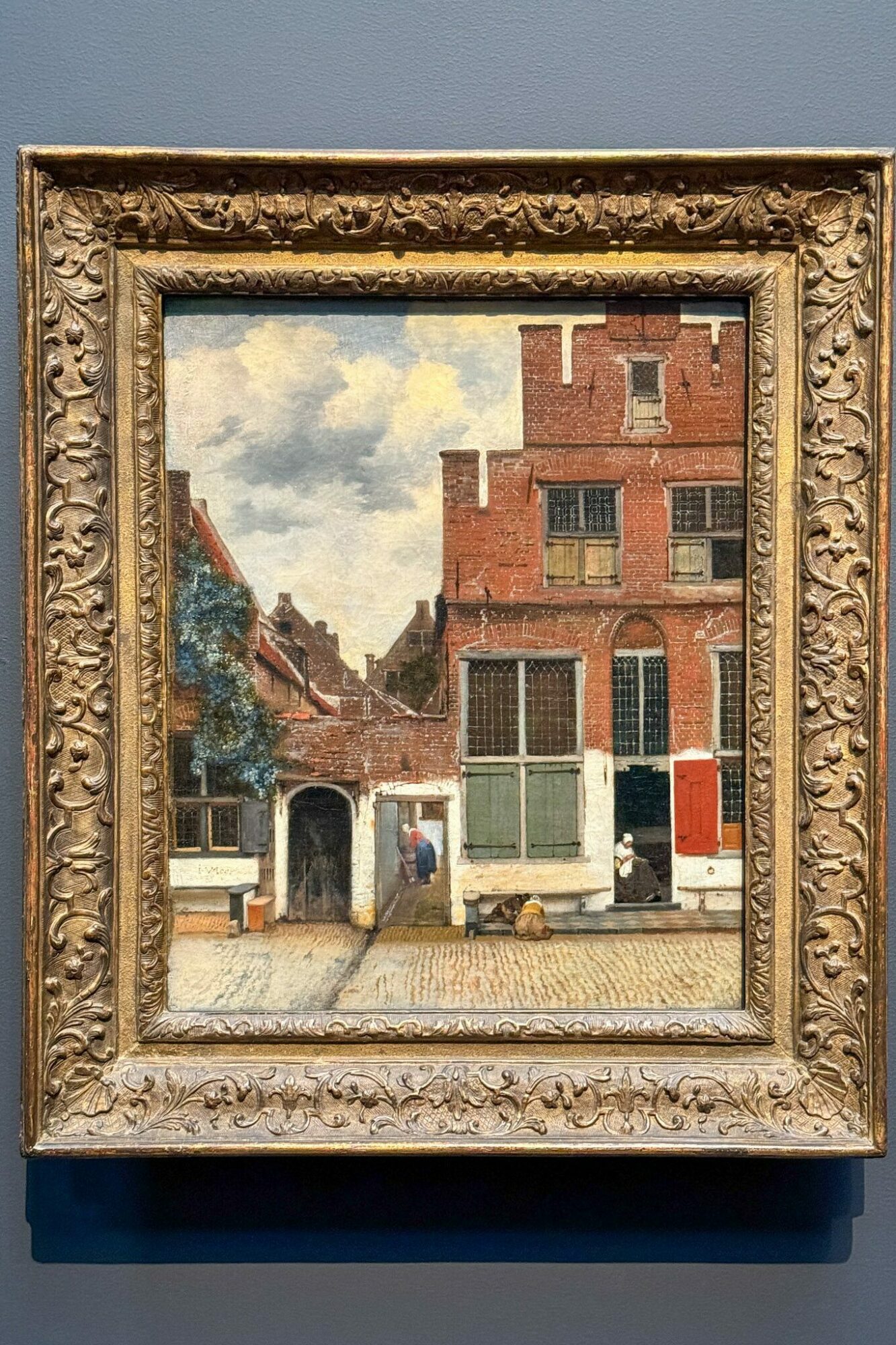
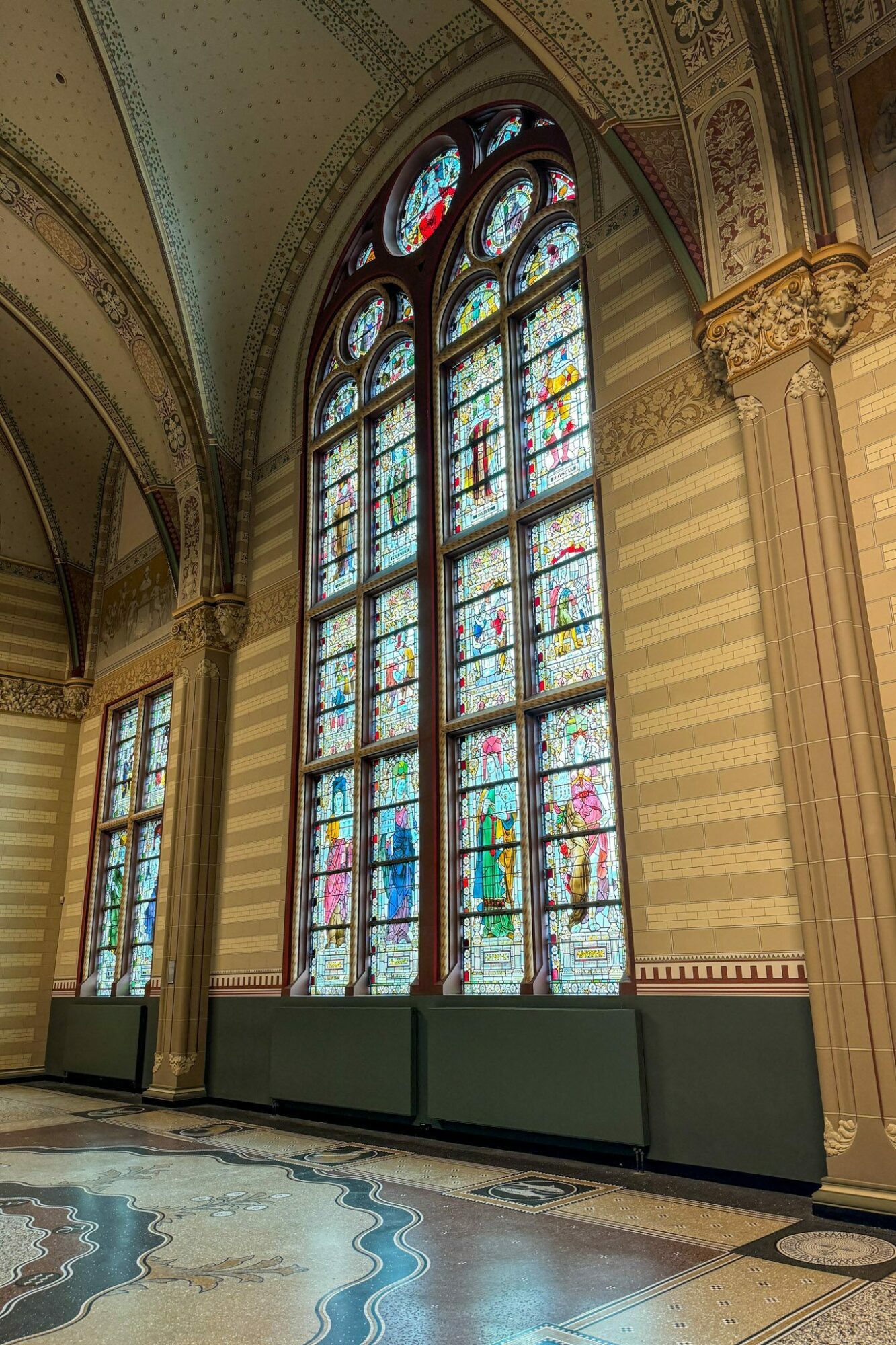
It’s also the first guided tour I’d recommend in Amsterdam because there is so much historical and cultural context behind the pieces you’ll see that you just won’t get without someone – preferably an art historian – talking about it.
I did this guided tour of the Rijksmuseum with Context Travel (who I am consistently impressed with because of their small groups of 6-8 maximum, and their expert guides).
The only issue is that the availability for their group tours is hit and miss. They do private tours, but they’re pricey and only really make sense if you have 4+ people.
I got lucky and ended up having a group tour while I was in Amsterdam, but I had this guided tour on my shortlist and would have booked that tour if the Context tour wasn’t available.
Here are a few things to know before you visit the museum.
Book timed entry tickets in advance. When you get to the museum (if you’re visiting on your own), you’ll see two lines. One is the ticket office, one is the security line.
Depending on when you’re there, both lines are probably going to be long.
Booking tickets in advance means you bypass one of them, and go straight to the security/entry line, which will save you time (that line moves quickly).
The best time to go is in the afternoon. There is no time of day where this museum isn’t busy – it’s the most popular museum in Amsterdam, after all – but the end of the day is quieter than the morning and midday according to our guide.
Bags need to be checked. It’s free and safe. I had a small tote bag, which was totally fine, but bigger backpacks will need to be left in the coatroom.
Get Inside an Artist’s Mind at the Van Gogh Museum
I was a little bit confused as to why, exactly, there is a Van Gogh Museum in Amsterdam because I associate Van Gogh with France, which is where he painted many of his famous works (and where he spent the last years of his life).
However, his name should have been a dead giveaway. Van Gogh was born in the south of the Netherlands, and grew up in the Netherlands before he made his way to France later in his life.
Van Gogh’s story is fairly unique because, unlike famous painters like Rembrandt, Velasquez, or Da Vinci, Van Gogh wasn’t actually famous during his life. He only ever sold one painting before his death.
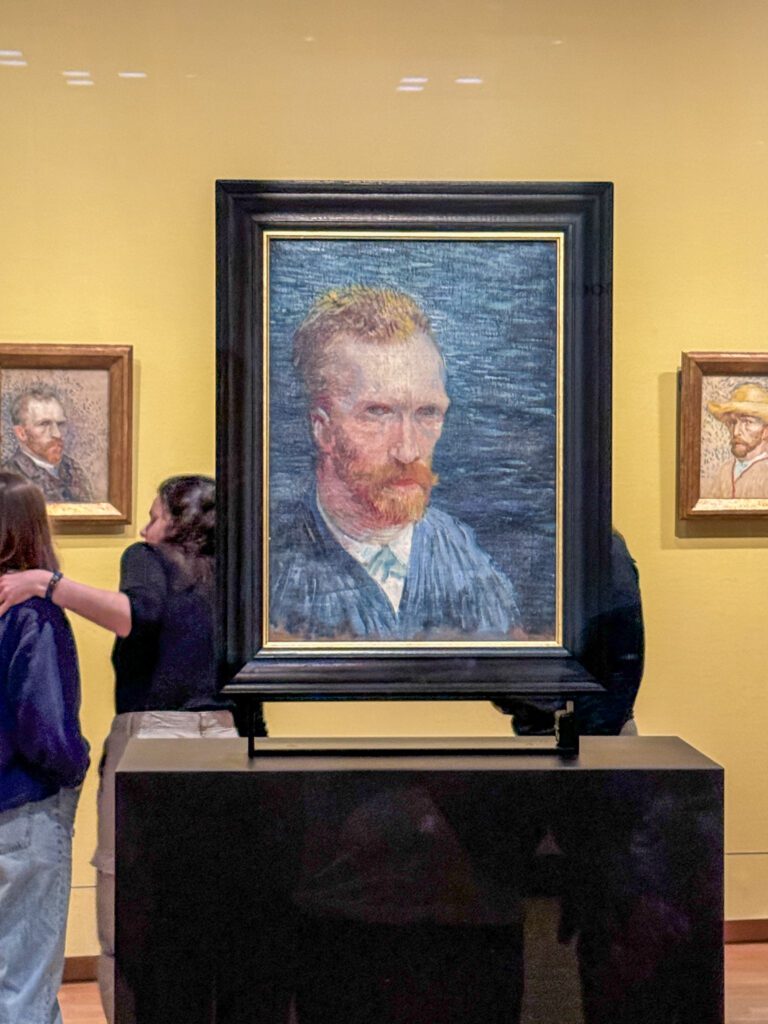
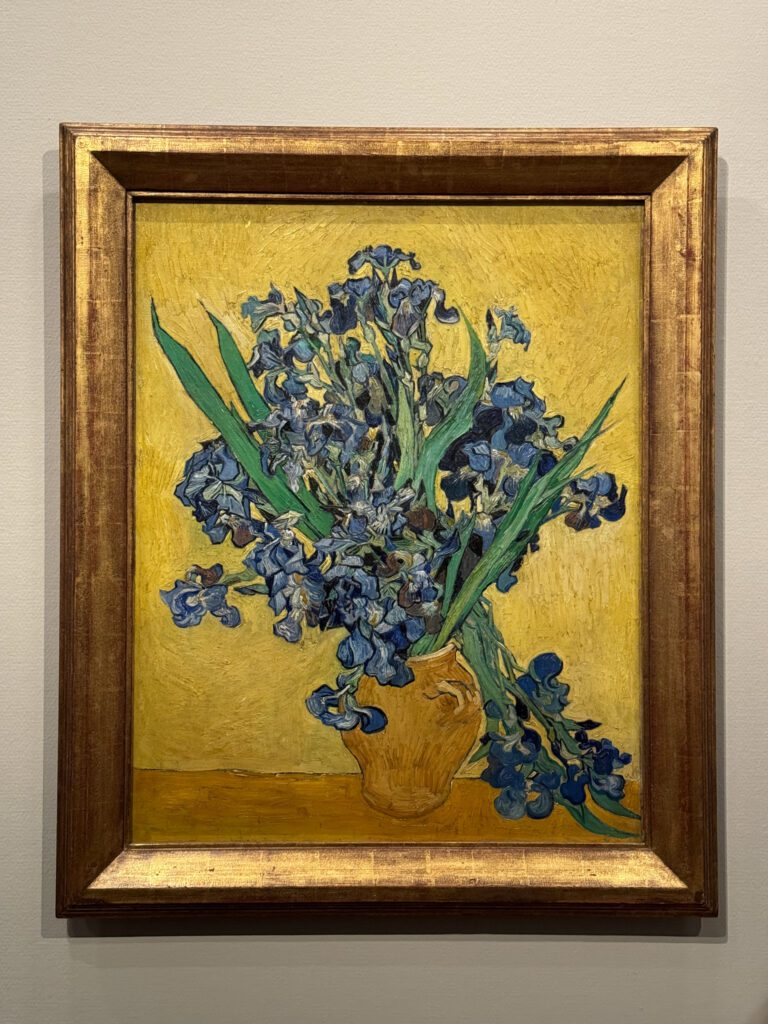
His family – specifically his brother’s widow, Johanna van Gogh-Bonger, is responsible for his post-death fame.
With a strategic knack for marketing, they distributed his works through exhibitions and sales, building his fame until today, when he’s arguably one of the most famous artists of all time.
In fact, they tried to sell his collection to the Rijksmuseum in the 1970’s, but they declined (for various reasons), which led to the establishment of a separate museum dedicated to Van Gogh a short walk away. Oopsie daisy!
Here’s the thing I like about Van Gogh; he was self taught (though he did do a brief stint in art school, which he subsequently left before finishing). He took inspiration from his contemporaries, which is evident as you explore this museum.
I wasn’t expecting to see art from any other artist besides Van Gogh in this museum, but sprinkled throughout you’ll find pieces from artists that he drew inspiration from immediately followed by a set of Van Gogh’s paintings that are clearly influenced by the various styles of other artists that are featured.
His self portraits, which were largely him practicing his technique for free (you don’t have to pay a model to sit for you if the model is you!), are a great illustration of this.
His early self portraits are deep, dark, and moody, reminiscent of Rembrandt, the famous 17th Century Dutch Master (which you’ll see at the Rijksmuseum).
As the impressionists gain popularity, with their bright colors and whimsical brush strokes, you start to see the evolution of Van Gogh’s style (particularly after he spends some time in Paris).
Van Gogh is a master of color, and that’s what I enjoy most about his work. He uses color in a way that is unique, experimenting with different combinations (for example, there’s a blue tint in his skin in a lot of his self portraits, which contrasts with the orangey-red of his hair).
Tragically, Van Gogh died relatively young, and struggled with mental health issues for most of his life.
The museum does a great job walking you through his story, telling a story of a man who badly wanted to be successful and worked hard to make that dream a reality. And, sadly, died before he could see the fruits of his labor.
There is plenty of English signage, but it is definitely worth paying for the audio guide for deeper storytelling.
I also did a guided tour of the Van Gogh Museum with Walks, one of my favorite tour companies in Europe, which I enjoyed and added an even deeper understanding of Van Gogh and his work.
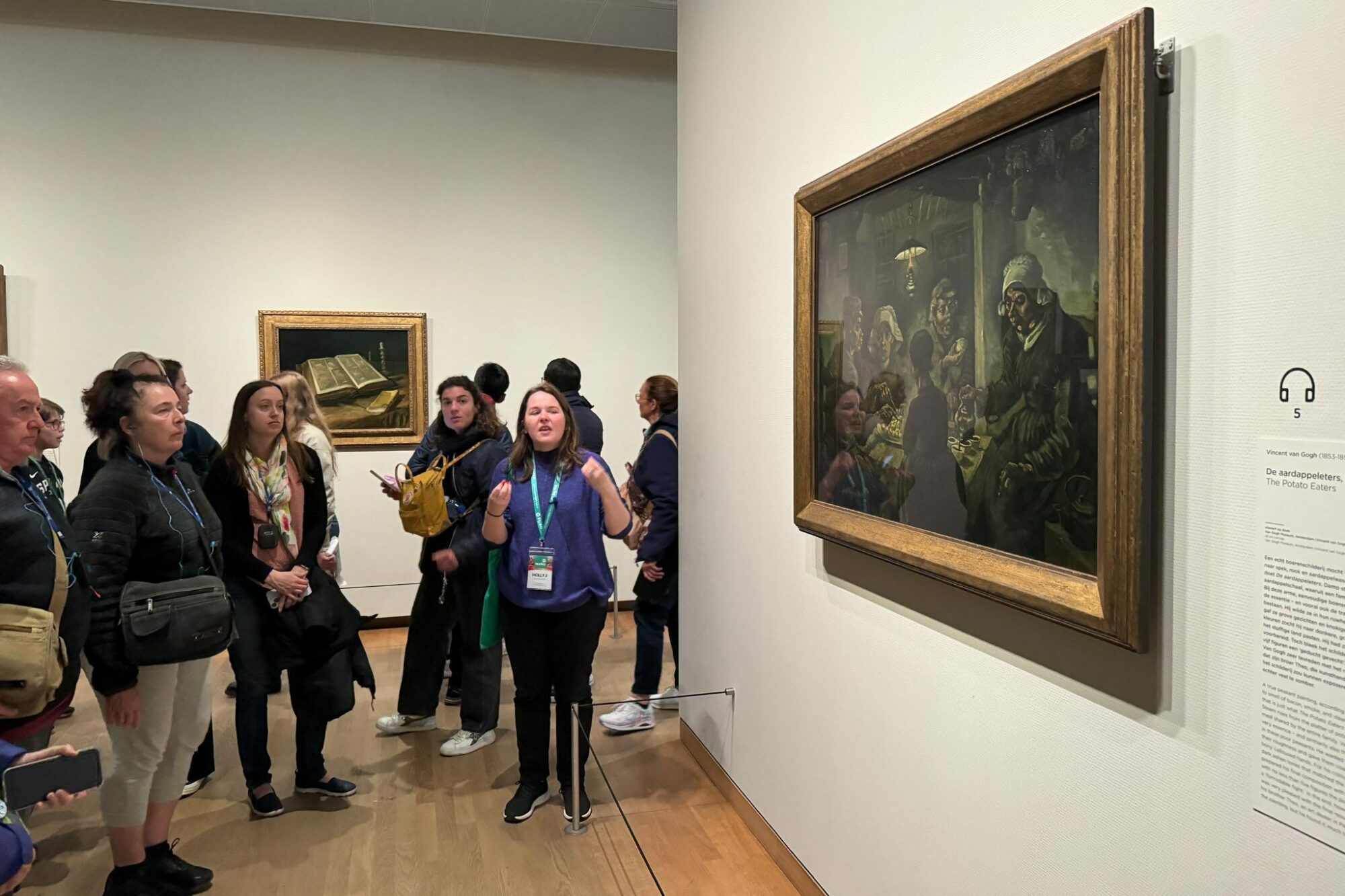
However, if I had to choose only one art museum tour to do in Amsterdam, it would absolutely be the Rijksmuseum.
One important note: You can’t bring bigger bags into the Van Gogh Museum because the lockers are relatively small, and I’m glad I left my camera backpack at home because it would not have fit in the lockers.
Visit The Anne Frank House
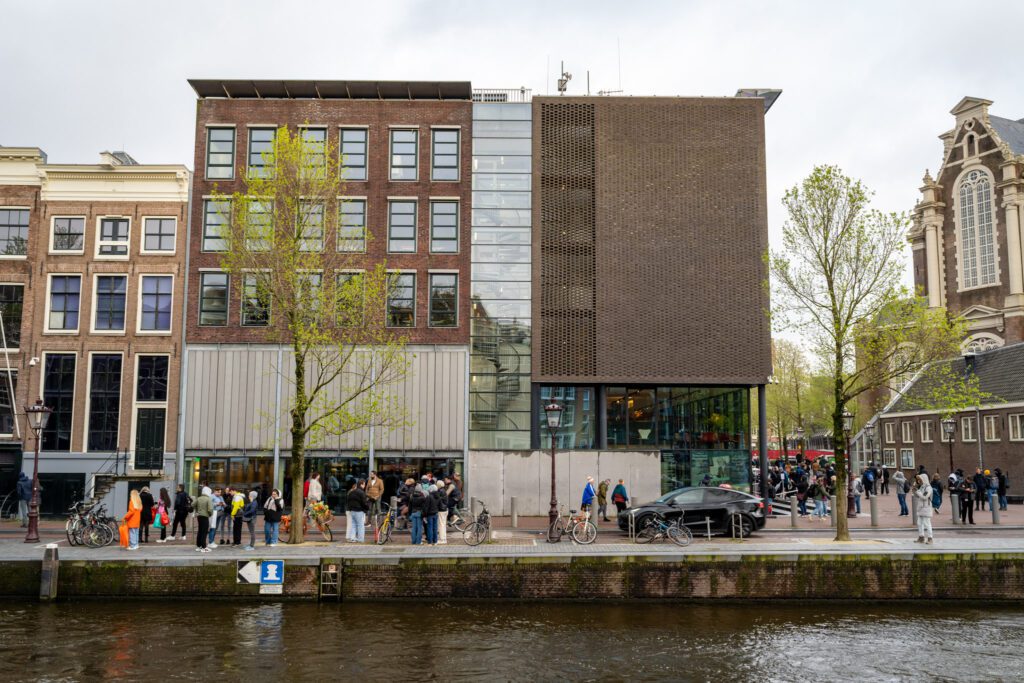
So I have slightly mixed feelings about the Anne Frank House. As someone who read Anne Frank’s Diary back in high school, visiting the place where it happened was important on my first trip to Amsterdam, and I’m glad I did it.
However, the one thing I would say about the Anne Frank House is that it focuses in on one person and her experience during the Holocaust in Amsterdam at the expense of the broader story of the Jewish community in Amsterdam.
Which absolutely makes sense given the focus of the museum, but on my latest trip to Amsterdam I went looking for a more comprehensive view (which you’ll find in the next “thing to do” below).
Back to the Anne Frank House, the first thing you need to know is that, during high season (which is basically six months at this point, from April or May to October) you need to book tickets well in advance.
Tickets go on sale six weeks in advance, which means they’re available to book on Tuesday morning at 10am CET for the dates six weeks later. If you want a specific time to fit into your Amsterdam itinerary, you’re going to want to book them on that morning if you can.
Tickets are going to cost €17 for adults (there are hefty discounts for kids) at the time of writing. There is an optional 30 minute pre-visit multimedia introduction that is an extra €7 (my mom did it recently, and thought it was well done and worth it – not suitable for very young children, though).
There’s a free audio guide that you should absolutely take advantage of, too.
The best place to book tickets is directly through the Anne Frank House’s official website (don’t book them through third parties, which are often scams).
Dive Deeper into the History of Amsterdam’s Jewish Community
As I mentioned above, on my latest trip to Amsterdam, I had a full 10 days to spend exploring the city and one aspect of Amsterdam’s story that I was interested in is the Jewish community in Amsterdam.
As someone who has spent a fair amount of time in Spain and Portugal over the past few years, which brought the brutality of the Inquisition down on the Jewish community in the Iberian Peninsula, one of the questions I always had is “where did they go?”
Turns out, Amsterdam is one of those places!
The story of the Jewish community in Amsterdam is emblematic of the broader story of Amsterdam.
Amsterdam has long been known as a bastion of tolerance – basically since its existence as a tiny fishing village and trading post. And it’s partially because it was founded outside of the traditional power structures that existed in medieval Europe: the nobility and the church.
That tolerance – which does have its limits, as there have certainly been instances of the city not living up to its ideals across history – created a safe space for Jews fleeing the Inquisition and other similar events across Europe, and led to the creation of a relatively large Jewish community in Amsterdam.
Which, of course, faced the horrors associated with the occupation during the Second World War.
If you’re interested in learning more about the Jewish history in Amsterdam, I cannot recommend this walking tour highly enough.
It takes you on a journey through the Jewish Quarter of Amsterdam, which is on the other side of the city from the Anne Frank House (which makes total sense when you think about the fact that the Franks were hiding and you wouldn’t do that INSIDE the Jewish Quarter).
It is worth noting that it DOES NOT include a tour of the Anne Frank House, but focuses instead on a broader look at the historical and cultural context (which is exactly what I was looking for).
Some other things worth doing to learn about the history of Amsterdam’s Jewish Community are the Jewish History Museum and the Portuguese Synagogue (which are across the street from each other in Oost / Plantage, and are included in the same ticket).
Eat Some Pickled Herring
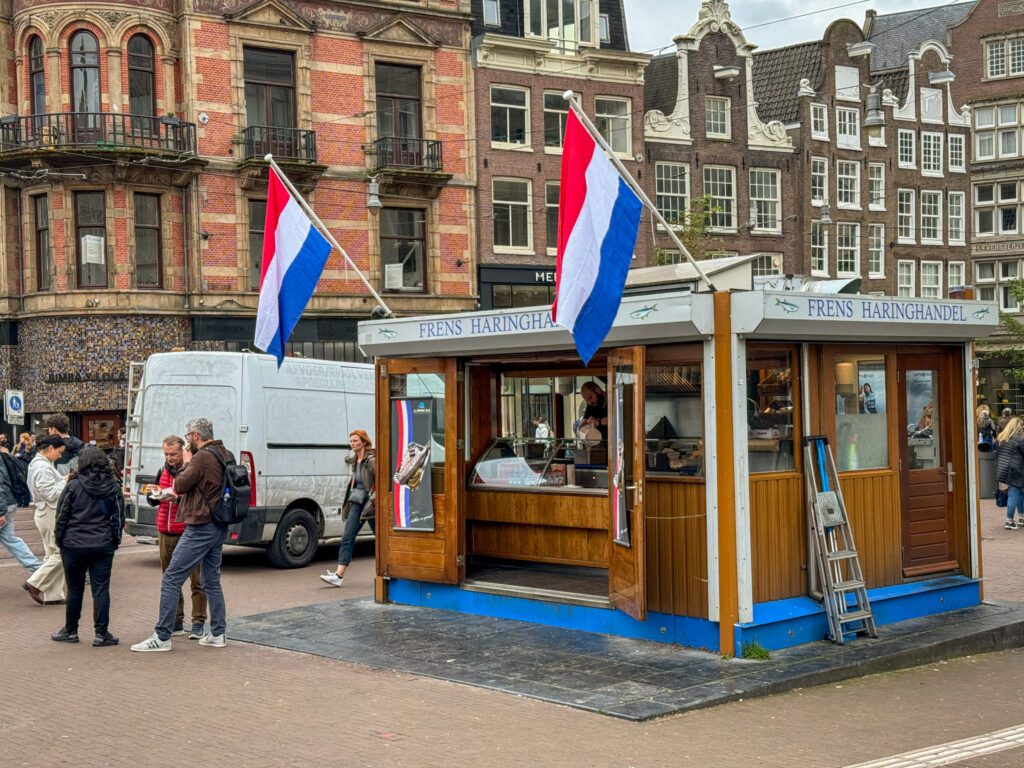
I know what you’re thinking, mostly because I thought exactly the same thing.
Pickled herring? Sounds gross.
However, before getting into the historical and cultural aspects of why pickled herring is worth trying, it’s worth talking about the food itself.
It is WAY less fishy than I expected. I first encountered it on my With Locals tour with Anna, who mentioned that it would be a good thing to try while in Amsterdam, and I expected to have one bite and call it a day.
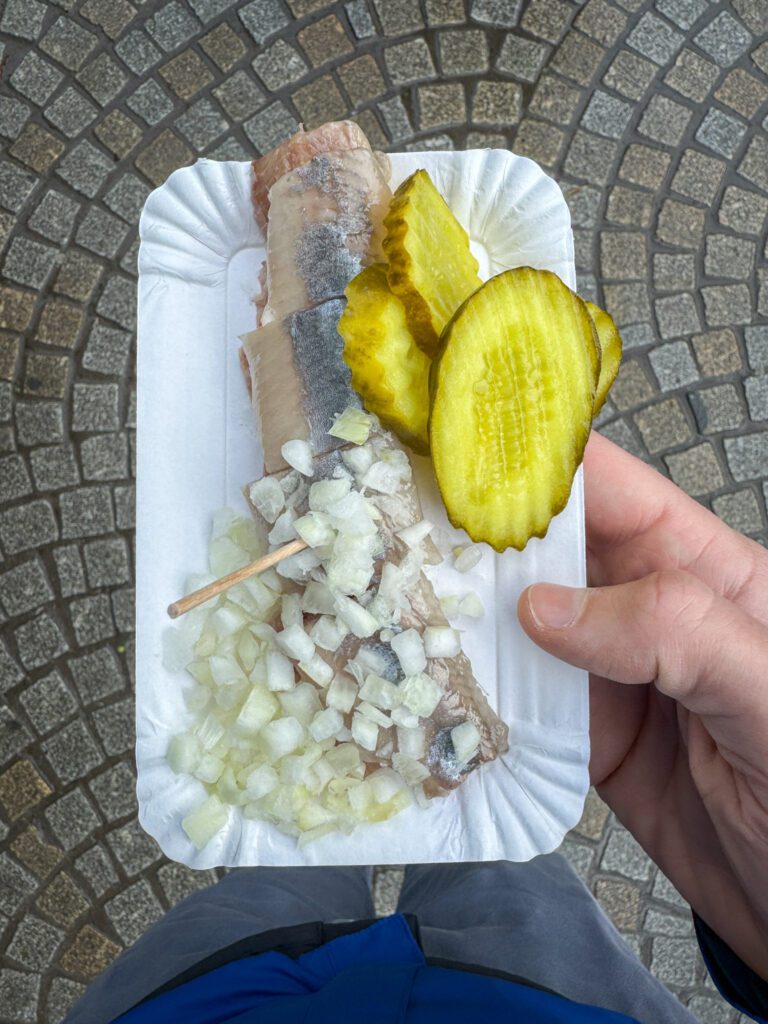
Turns out, I ended up finishing the whole plate!
Pickled herring is pickled, but it doesn’t really have that vinegary flavor that you’d expect from something pickled, and the texture of the fish is really nice – silky and smooth – kind of similar to sashimi.
Let’s talk about why pickled herring is a thing in Amsterdam.
It all goes back to Amsterdam’s roots as a merchant city and the center of one of the most powerful naval empires in the world during the 16th and 17th centuries.
Plus, it’s close to the water (especially before the land to the north was reclaimed), so fish as a part of the local cuisine totally makes sense.
Similar to the windmills, pickled herring contributed to the rise of the Dutch empire and its Golden Age in the 17th Century by enabling the merchants and sailors to stay at sea for longer periods of time.
They would fish as they went, cleaning the fish and tossing them into a barrel full of brine, and then eat them along the way
Today, you’ll see stands selling pickled herring – Hollandse Nieuwe – all over the city.
There are two ways to consume it, but both versions include raw white onions and pickles alongside the fish.
First is plain, chopped into bite sized pieces and served on a plate with a little fork and the accouterments.
Second is as a sandwich, which is something like a hoagie roll stuffed with the herring and onions and pickles.
There are a few places to try it – usually at a little pop up stand – and I personally tried it at this stand right off of Dam Square, but I was told to go to Stubbe’s Haring (here on Google Maps), which is a few blocks from Amsterdam Centraal at the very northern end of the canal belt.
Even if you’re not super into fish, I’d highly recommend finding some pickled herring to try while you’re in Amsterdam.
Hit the Albert Cuyp Market in De Pijp
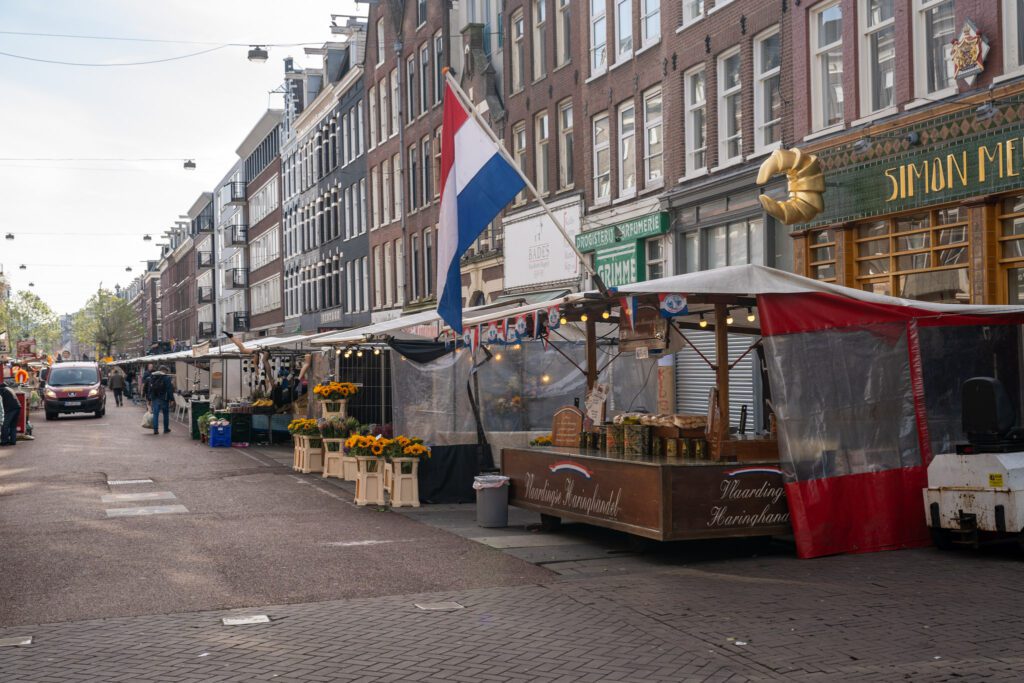
I have been to Amsterdam several times at this point, and every single trip includes AT LEAST one trip to De Pijp to do a walkthrough of the Albert Cuyp Market, a huge daily outdoor market that spans five blocks.
The five block stretch of Albert Cuypstraat in the middle of De Pijp comes alive with the Albert Cuyp Market every day from 9:30am to 5:30pm except Sunday.
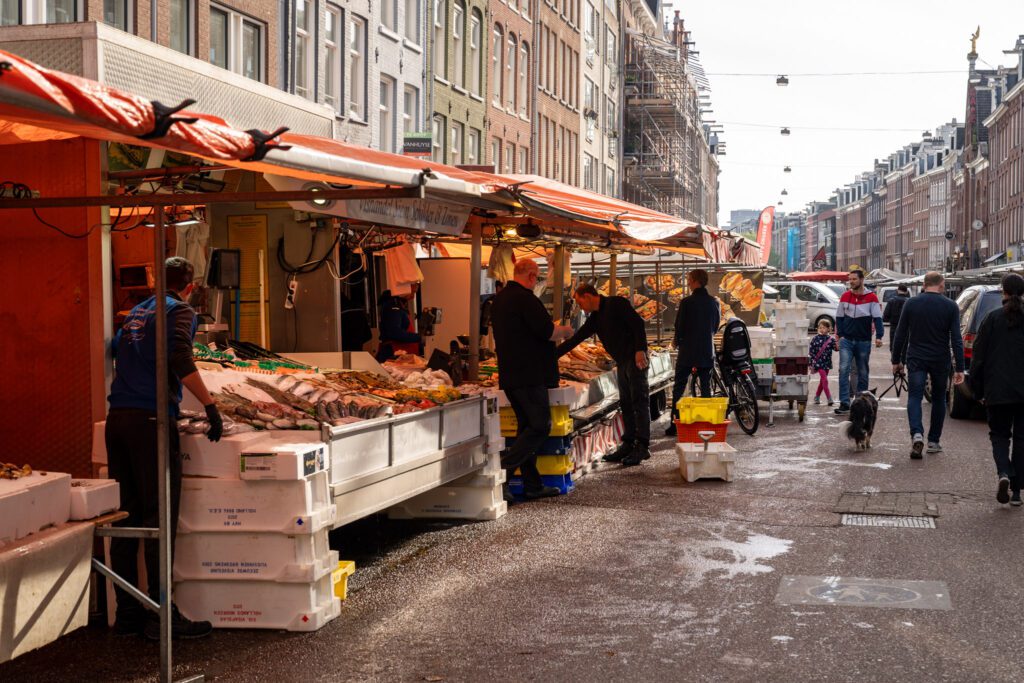
It’s worth a browse, with a mixture of food vendors selling groceries (like cheese, meat, dairy, etc), food trucks selling ready-to-eat food, and flea market-esque vendors selling random knick-knacks.
Don’t miss fresh-pressed stroopwafels from Rudi’s (find their food truck times and locations here).
This would also be a great place to try pickled herring, as there is at least one stand selling it at the market (on my last visit, anyway).
…And Explore the Rest of De Pijp
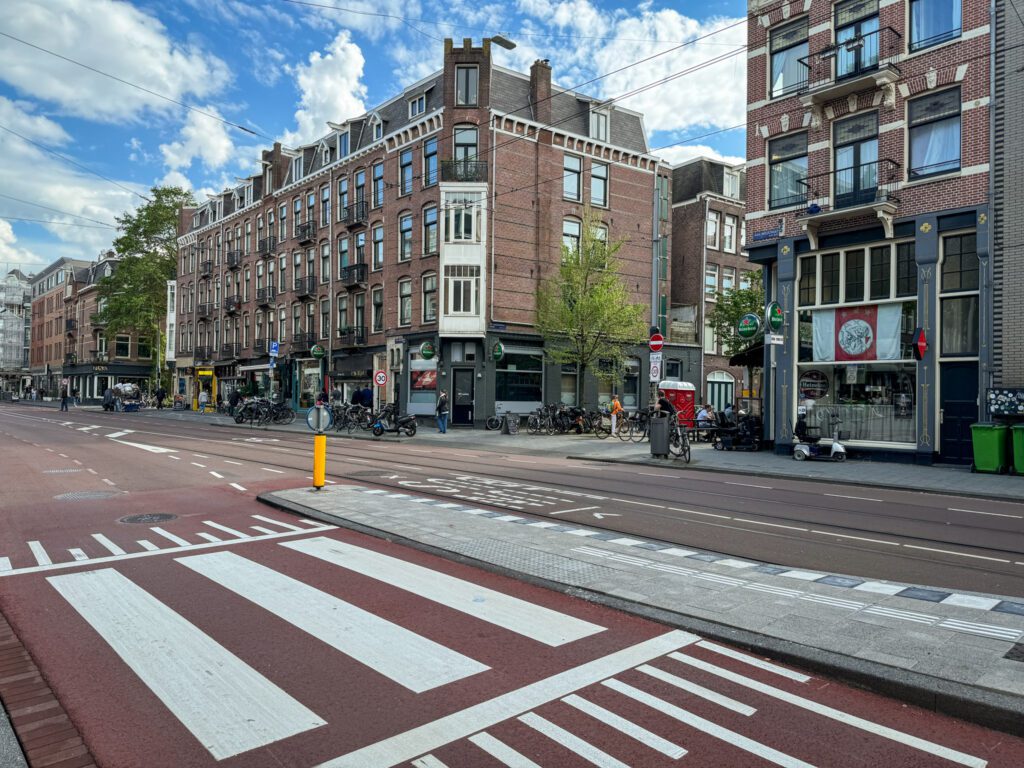
While the Albert Cuyp Market is probably the main tourist attraction in De Pijp, the rest of the neighborhood is very much worth exploring because it is my favorite neighborhood in Amsterdam.
I’m a sucker for brick buildings – we don’t do brick buildings on the west coast of the US because of earthquakes – and De Pijp is full of beautiful multi-story brick buildings.
Plus, it’s full of excellent places to eat and drink, a nice park, and a feeling that local Amsterdamers actually live here.
After my first trip to Amsterdam years and years ago, I viewed De Pijp as the place where the Albert Cuyp Market is, and didn’t think much beyond that.
Yes, the Albert Cuyp Market is great, and is well worth a visit. But there’s A LOT more to De Pijp than that one delicious street.
On this last trip, I stayed a few blocks away from the eastern border of De Pijp and found myself walking through it at various points (mostly to eat and drink, if we’re being honest).
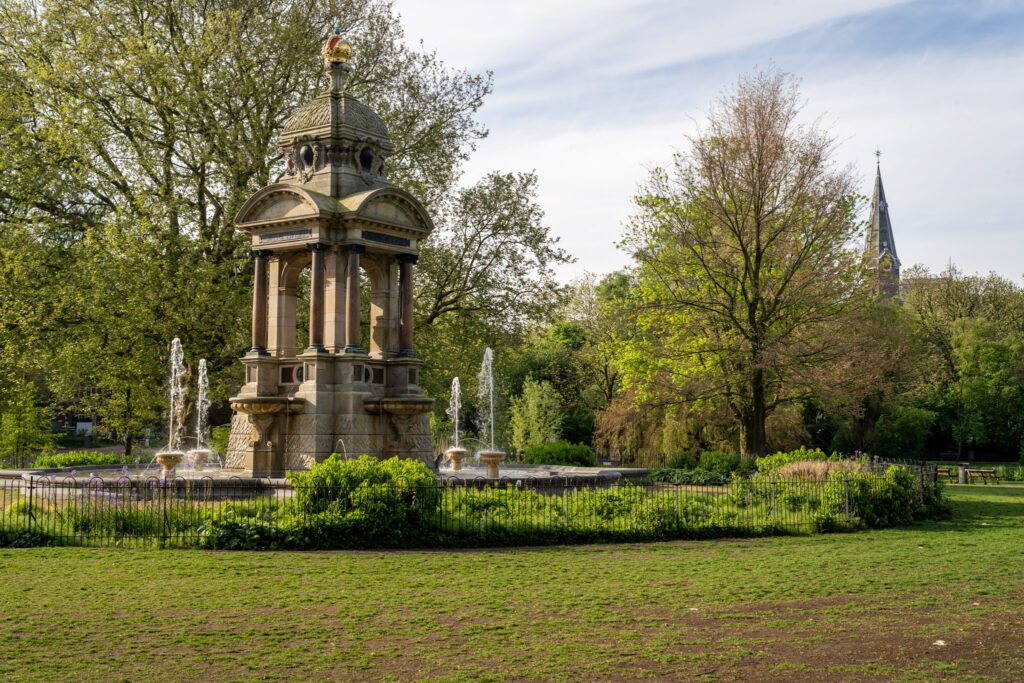
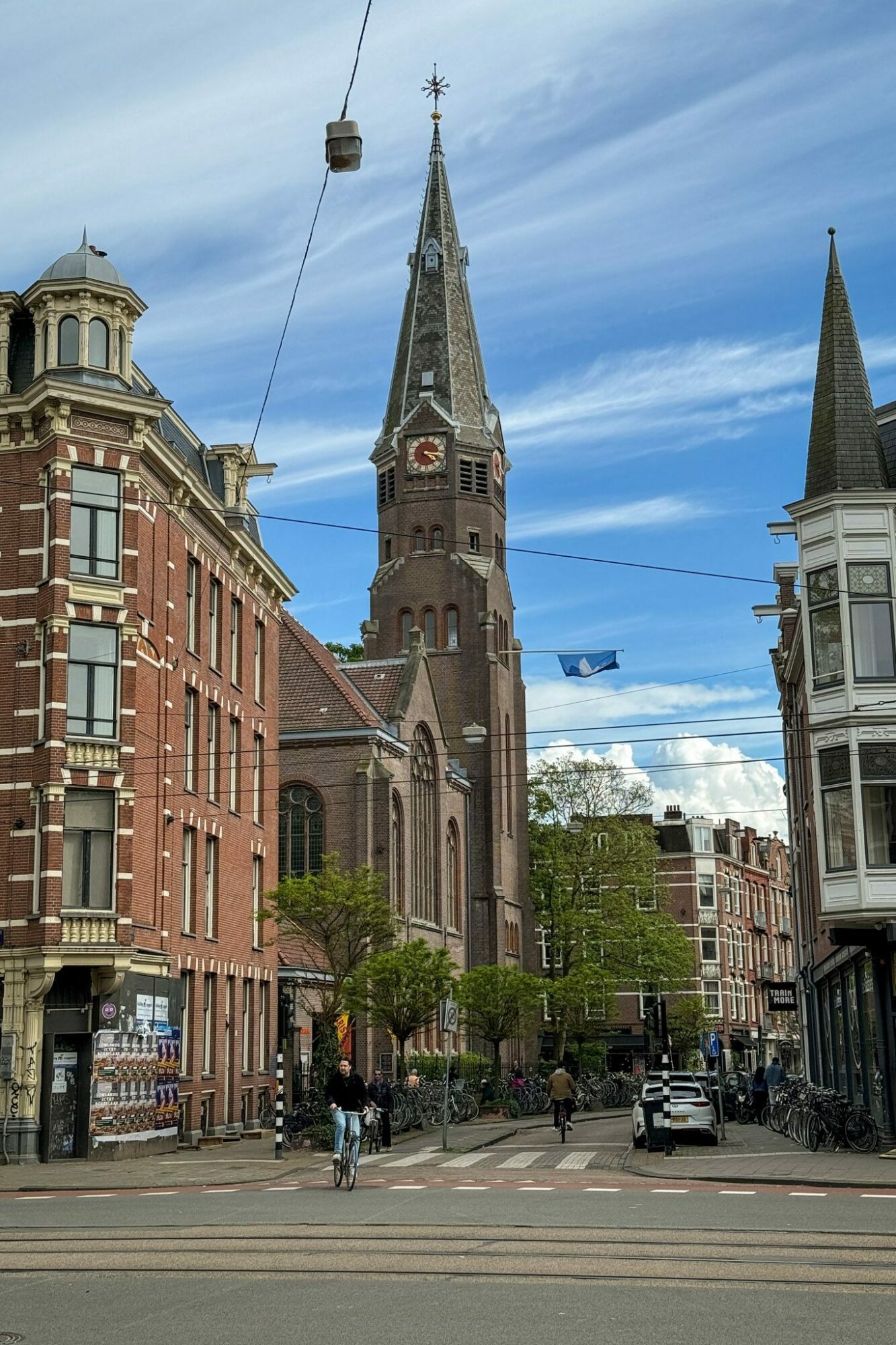
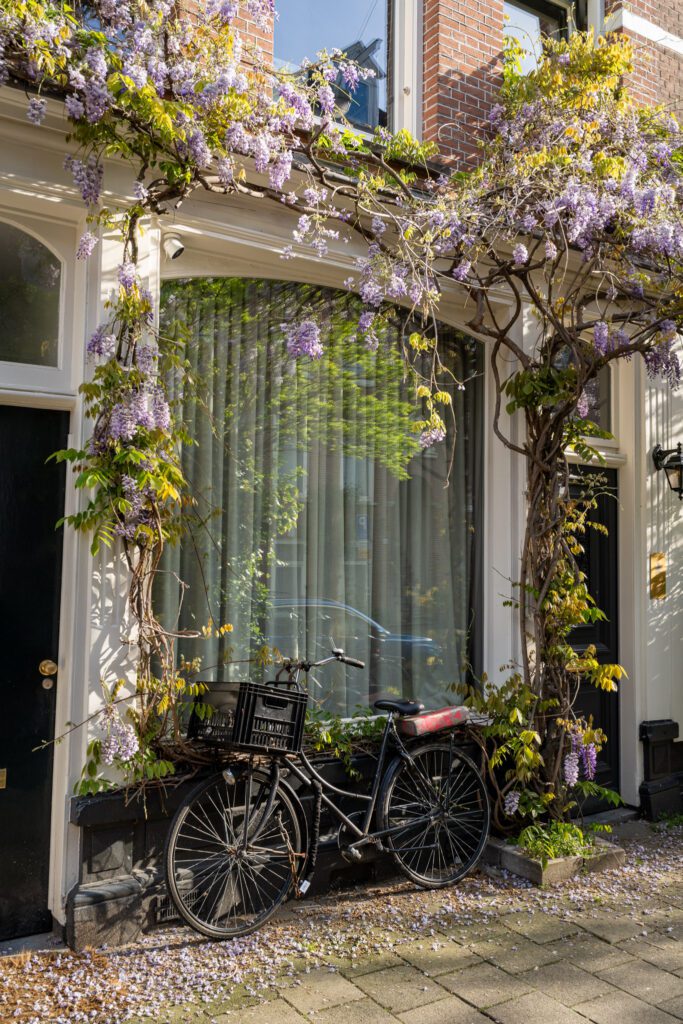
It’s very charming, and I saw exactly zero tour groups in the neighborhood, which is a nice break from the hordes in the Red Light District.
Here are some of my favorite places in De Pijp, mostly food related.
Craft Coffee & Pastry: If you or someone in your group are gluten free, run – don’t walk – straight to this gluten free bakery in De Pijp. It was even recommended to me at a bakery that was NOT gluten free (I was there for the coffee) as a must-visit place when I told them I have Celiac Disease. There will likely be a line, and the best selection is available at opening. Get there 15 minutes early to be one of the first in line!
Clay Coffee (and Pottery Studio): My favorite coffee shop in De Pijp, it’s just across the street from the eastern end of the market, and they have a couple of rotating roasters that they use (including Sey, my favorite roaster in the USA).
Glou Glou: My first true love in De Pijp, I’ve now been here three times across multiple trips to Amsterdam, and have loved the experience every time. They focus on natural wines, so they’re going to be a little funkier (some might say more interesting) than the wines you might be used to, but the staff are more than happy to help you find something you like (and will pour you a sample if you’re not sure about something).

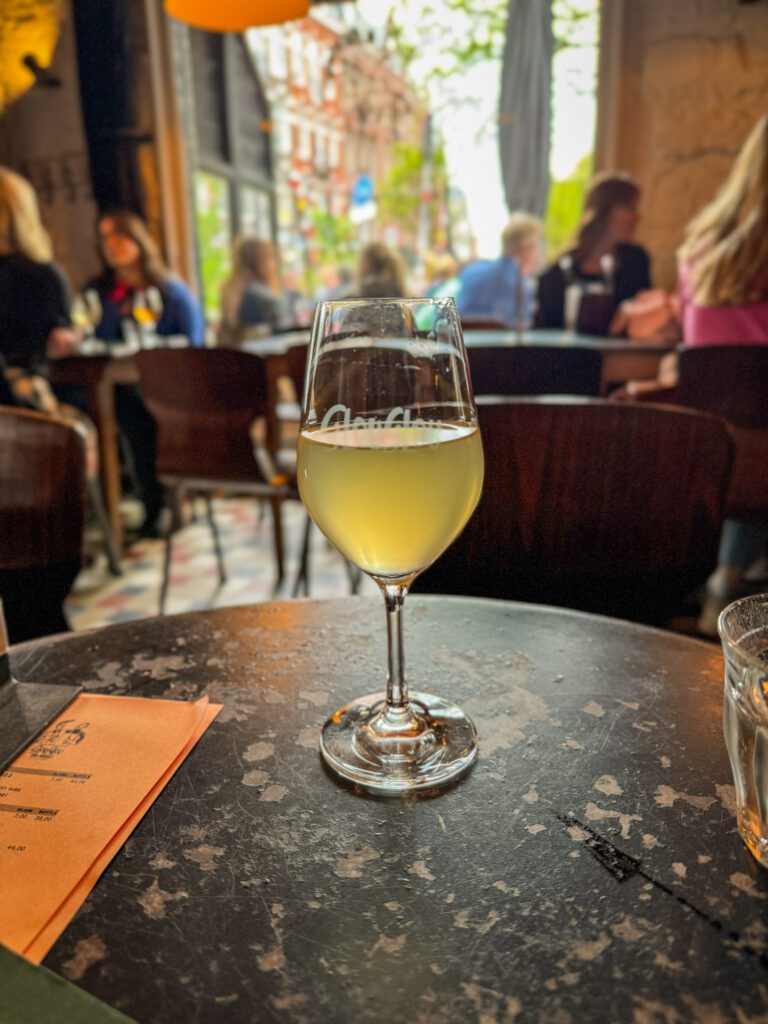
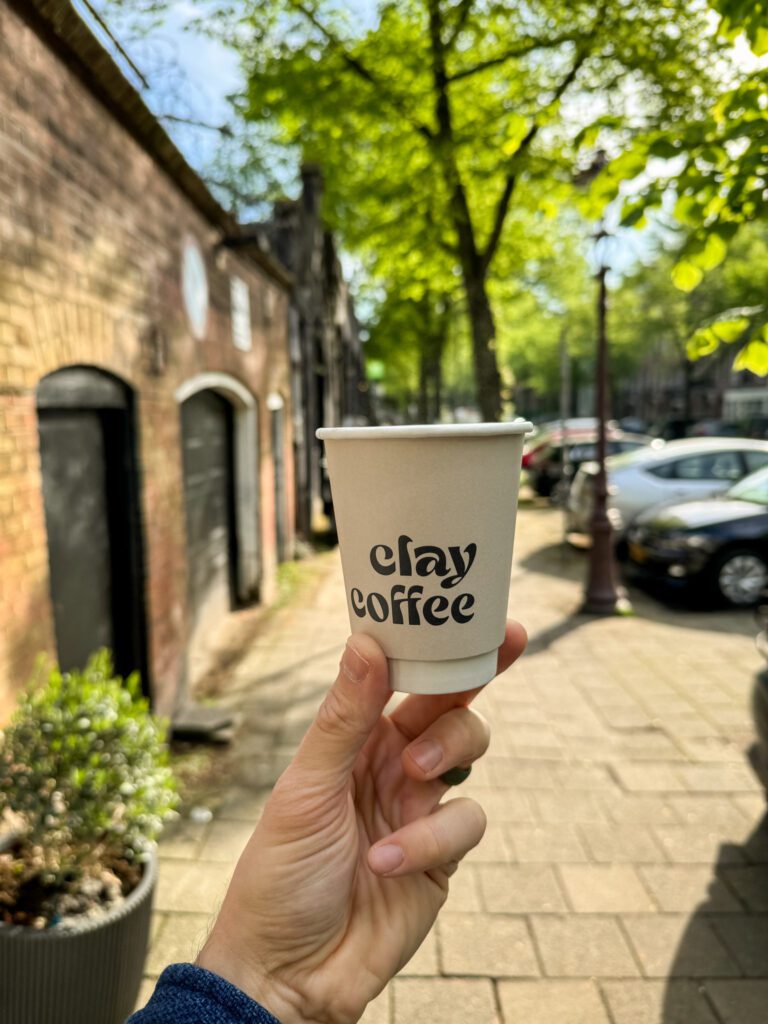
Nook: Part coffee shop, part wine bar (focusing on Argentinian wines), this place was busy every time I walked by.
Sarphatipark: The centerpiece of De Pijp, in a lot of ways, is this charming little park right in the middle of it. There’s a nice pond, some fountain action, and plenty of benches and grassy spaces to picnic and people watch (particularly in the summer).
Bierbaum: Mostly a beer store (which I’m not into because I have Celiac Disease), but they also have a really nice cider selection (which I’m very much into).
Massimo Gelato: This gelato shop was recommended to me by multiple people, but I can’t really eat there because of cross-contact with gluten. However, I wanted to share it with you, because who doesn’t love simple, authentic Italian gelato?
Let’s Talk About Amsterdam’s Red Light District
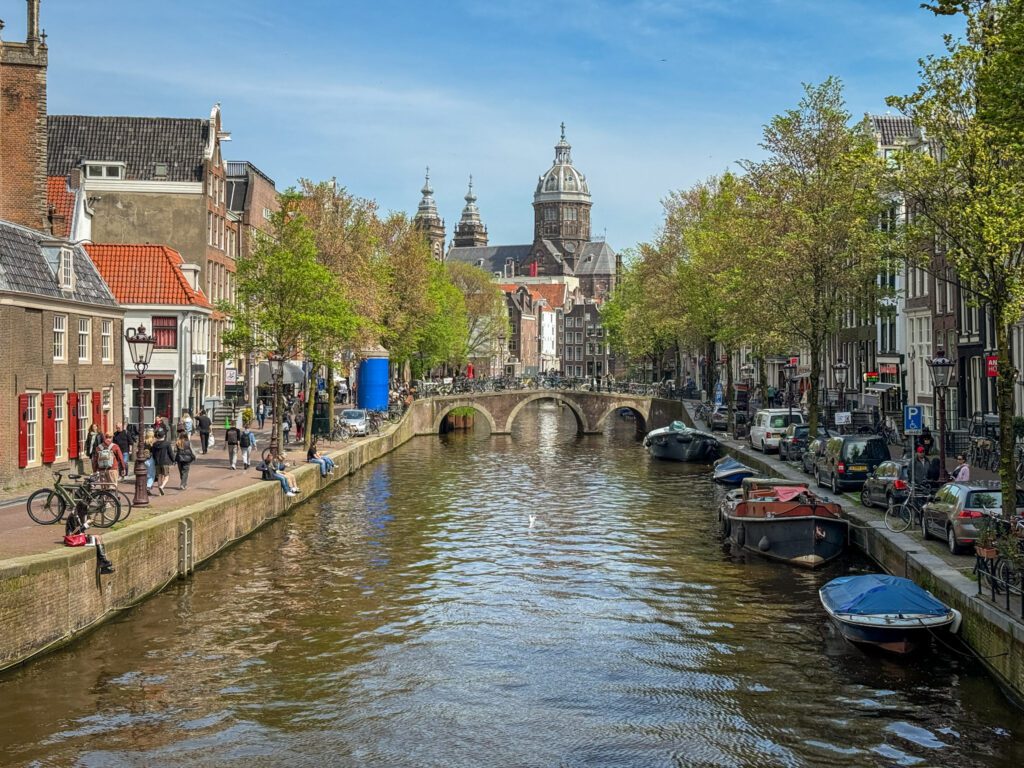
I have very, VERY mixed feelings about the Red Light District in Amsterdam, which is known locally as “De Wallen,” named after the wall that used to encircle the historic city.
On the one hand, it’s emblematic of Amsterdam’s history as one of the most tolerant places in Europe thanks to the relatively low influence of the Catholic Church.
It’s also part of the oldest core of the city, and many of the buildings here have roots almost 1,000 years ago.
On the other hand, it has been part of the reputation that Amsterdam has developed as a party destination, and multiple locals I met talked about the influx of (mostly young British men) tourists who would come to Amsterdam without a hotel room and just spend their days and nights in the Red Light District, sleeping on the street.
To be completely honest, the prices in Amsterdam make this a laughable idea to me.
However, multiple people – especially older Americans – said something along the lines of “Oh, planning on partying a lot, huh?” when I mentioned I was spending 10 days in the city.
Spoiler alert: I like my 9pm bedtime WAY too much to be partying late into the night (something that has been true my entire life).
Anyway, back to the Red Light District.
I almost want to say that you shouldn’t bother visiting (it’s purposely not included on our Amsterdam itinerary), but there are some redeeming qualities that make it worth a walkthrough.
This is part of the oldest section of the city, and there are places where you can see an existing portion of the old wall.
It’s also a beautiful part of the city, and one of my favorite photo spots in Amsterdam is right on the border of the Red Light District (here on Google Maps).
So here’s how I would experience the Red Light District: Walk through in the morning, before the crowds arrive and soak up the beauty of the old buildings and canals.
If you’re interested in seeing it at night, walk around around 9pm – when it’s dark and the women are working, but before people are throwing up in the canals.
One of the things I appreciate about the Red Light District – and this is something that was touched on in two separate walking tours – is the fact that it is HEAVILY regulated by the government.
It is, obviously, a more dangerous profession than, say, a lawyer, but the government does its best to make it as safe as it can be.
It’s also far less stigmatized – though it’s not true that there is zero stigma – than it is here in the United States. It’s a profession, first and foremost.
There are actually movements to move the Red Light District to a location outside of Central Amsterdam, which has been met with mixed reviews (obviously, the workers would see a decrease in business because it would be further to travel).
Explore the Jordaan
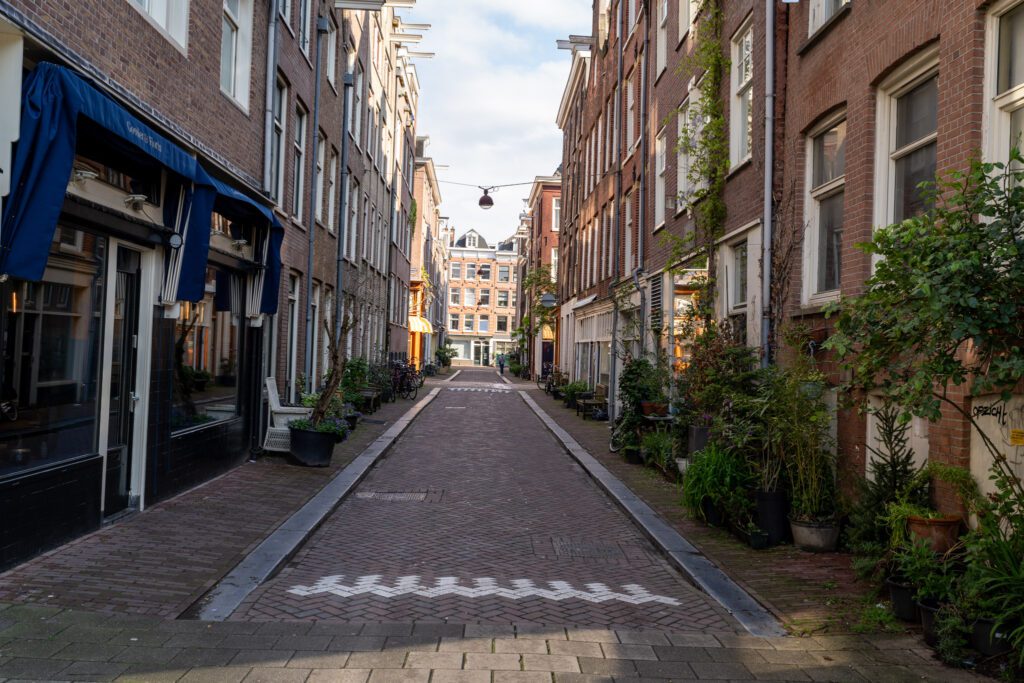
The story of the Jordaan, which is Amsterdam’s trendiest, hippest neighborhood today (although it probably has crossed the threshold from hipster to yuppie at this point), is a familiar one if you’re familiar with neighborhoods like Brooklyn in NYC or Shoreditch in London.
It started out as a place for workers who served the rich families living in the Grachtengordel to live, and was a working class neighborhood in the middle of the 20th Century.
At that point, the conditions in the neighborhood were awful, with tons of people living on top of each other with poor sanitation.
So, the government stepped in and started to renovate the buildings in the neighborhood, making it a much safer – but still relatively cheap – place to live.
Soon, the artists and students showed up.
Then, the businesses serving those younger, hipper populations started to pop up.
Stop me if you’ve heard this story before.
Then, the hipsters followed, wanting to experience that hipness for themselves.
And, finally, property values started to rise, businesses like art galleries and vegan bakeries started to pop up, and the yuppies moved in.
Today, Jordaan is an interesting mix of the working class and yuppie, which is partially because they did their best to maintain the look and feel of the neighborhood as they renovated.
You still have the multi-family housing centered around internal gardens – which were originally built by rich families to appease their workers – and the historic businesses, but you also have a layer of trendy, hip places to eat, drink, and shop.
It’s absolutely worth a visit, both in the morning and in the evening, when you’ll see different parts of the neighborhood come alive.
Here are some spots in Jordaan that we enjoyed, and think you might too.
Saint-Jean: This is a popular spot in the Jordaan that is part specialty coffee shop, part vegan bakery. In fact, it was my favorite specialty coffee shop in Amsterdam (we’re talking about real coffee here).
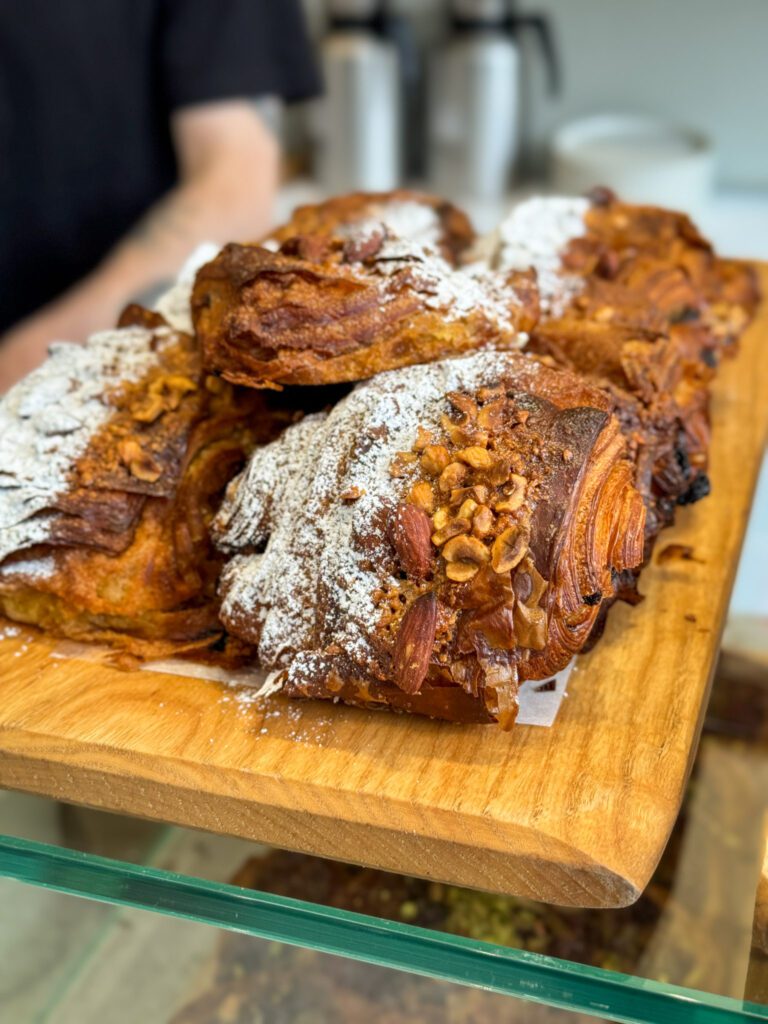
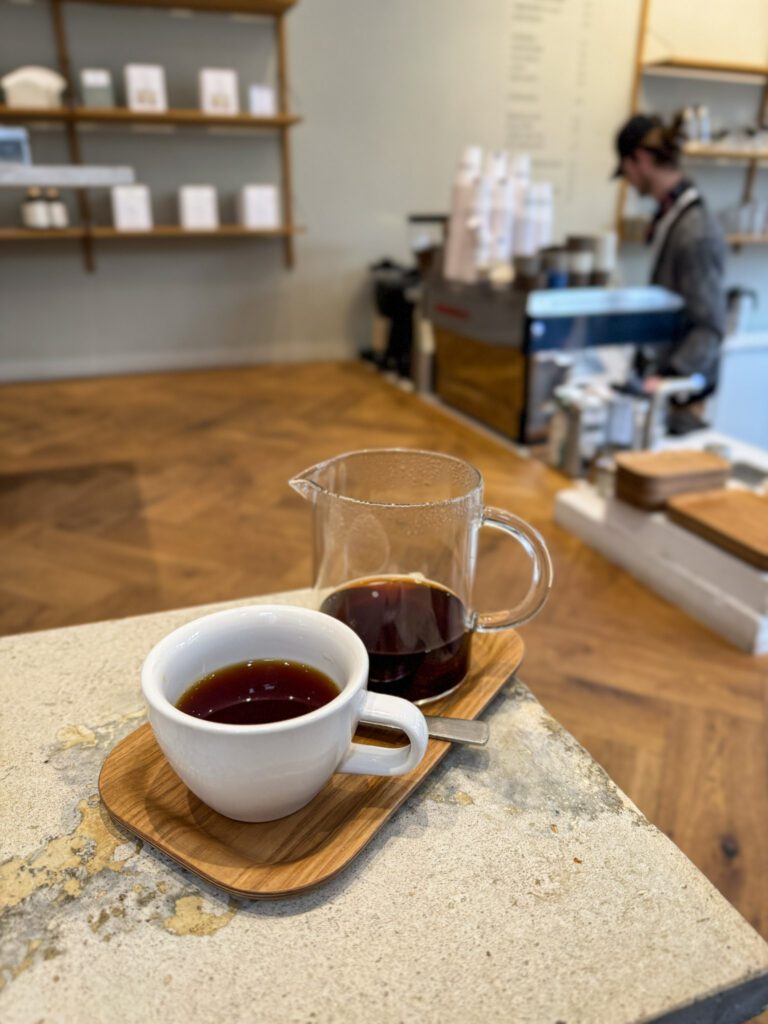
Winkel 43: A more modern take on Dutch Apple Pie, this place gets a lot of press, and it lived up to expectations when I forced my brother to try it on our first trip to Amsterdam a long time ago.
Café ‘t Papeneiland: A historic “Cafe Bruin” (Brown Cafe) that we visited on the Humans of Amsterdam tour for their more traditional take on Dutch Apple Pie. Bill Clinton once visited this spot, and it’s also a good place to try “bitterballen” and other Dutch specialties, all in a very cozy atmosphere with big windows, lots of dark wood, and chandeliers.
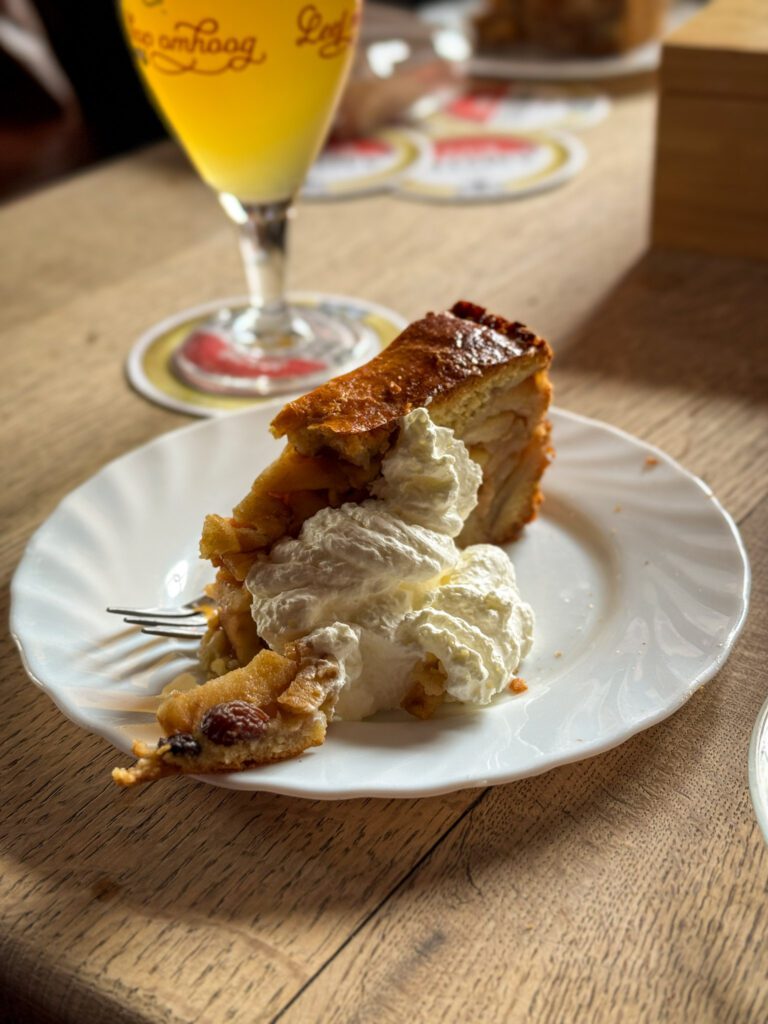
Café de Tuin: An atmospheric old bar that I went to on my first trip to Amsterdam, and have fond (albeit blurry) memories of to this day.
Brouwersgracht: A lovely canal on the northern end of the neighborhood, it was once the place where you’d find all of the breweries (hence the name) with vast warehouses. Now, it’s one of the most picturesque canals in this part of the city.
Bar Oldenhof: A cozy cocktail bar along a buzzing stretch of Elandsgracht that is worth walking. I particularly enjoyed the park at the eastern end of the city, which seemed to be packed with people enjoying the sunny day every time I walked by and it was nice out.
Visit Amsterdam’s Less Heralded Museums
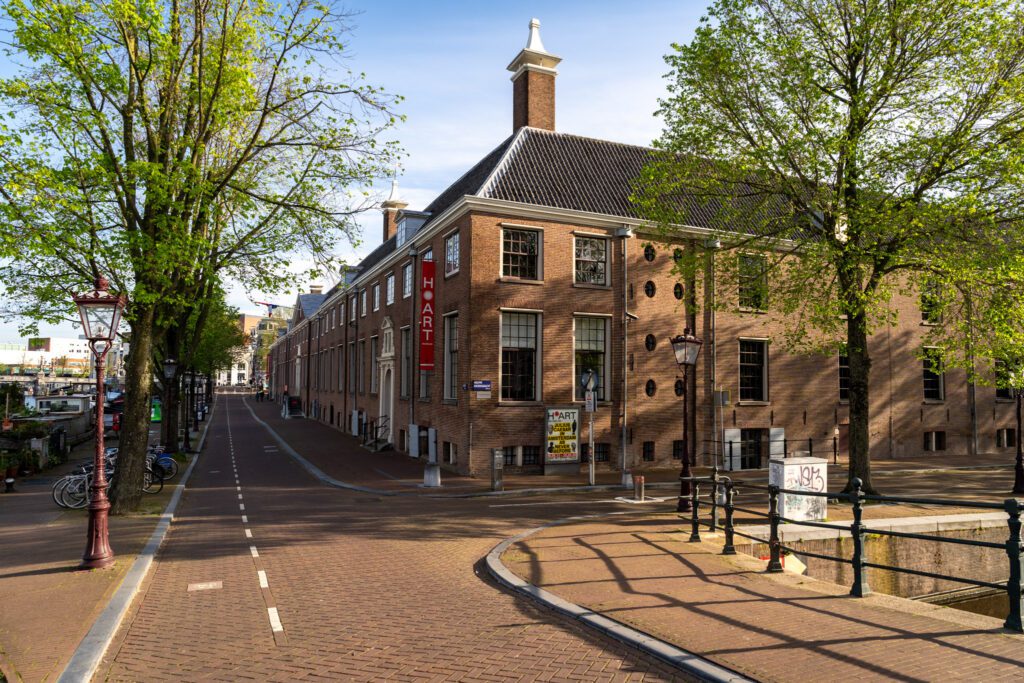
Amsterdam has a couple of world class museums that we’ve already covered above, but if you’re visiting Amsterdam and have extra time, there are a couple of other museums that are worth exploring.
The first is the Dutch Resistance Museum, which covers the dark period during World War 2 when the Netherlands was occupied by German forces.
This museum weaves a pretty compelling narrative around the Dutch resistance – the group who was doing their best to protect the Dutch people (particularly the Jewish community).
The thing I liked here was that they gave the bigger picture of what life was like in Amsterdam, but also covered the individual acts of heroism that don’t really show up in history books, but are the important pieces that ladder up to that bigger picture.
The second is the Amsterdam Museum, which is a good historical overview of the history of the city. And it’s compact!
You probably only need an hour or two to see it, and that’s if you take advantage of the free audio guide to get the narrated part of the story behind the artifacts they have on display (you should).
There are obviously other museums in Amsterdam – I already mentioned the Jewish History Museum above, and there’s also the Moco Museum (modern art), the National Maritime Museum, and the Grachten Museum (focusing on the history of the canals) – and all of those were recommended to me at one point on this last trip.
See the Tulips

It’s important to note right at the top here that this is very much a seasonal attraction, because the tulips only bloom from the end of March through roughly mid-May, depending on the year.
On this last trip to Amsterdam, I happened to be there smack dab in the middle of April, which coincided with peak bloom.
Now, normally botanical gardens and plants of all kinds are Alysha’s thing, and she was back home in Portland on that particular trip (where we were having our own series of blooms, including cherry blossoms and tulips).
I decided to make a day of it and spend one of my many days in Amsterdam exploring the countryside outside the city limits.
The most accessible place to see tulips outside of Amsterdam is going to be Keukenhof Gardens, a curated garden just outside of Amsterdam that is open from the end of March through mid-May.
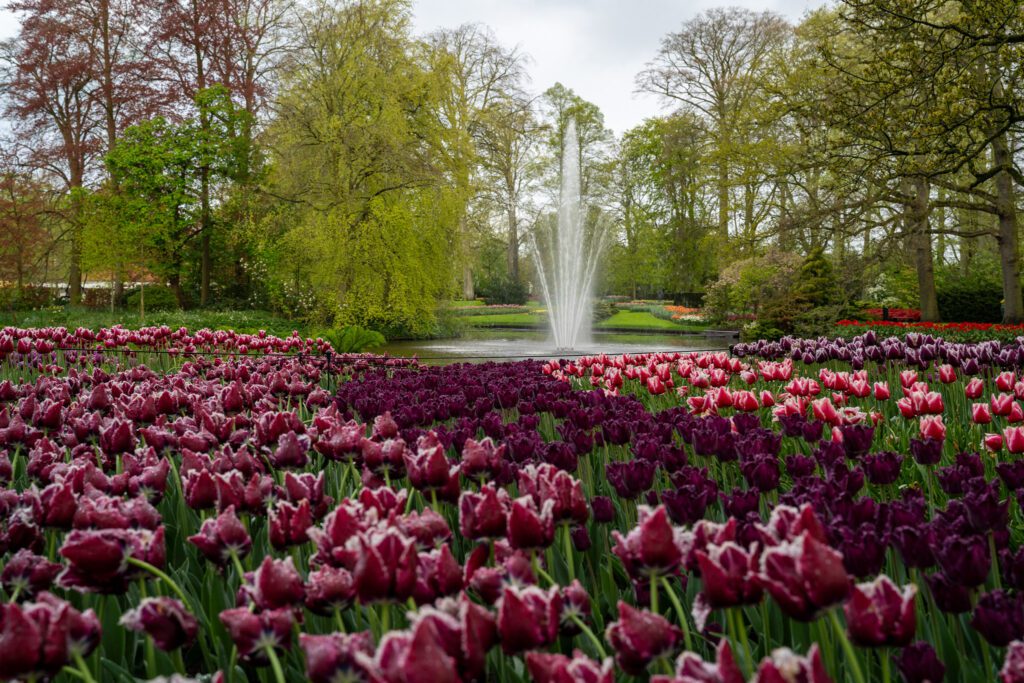
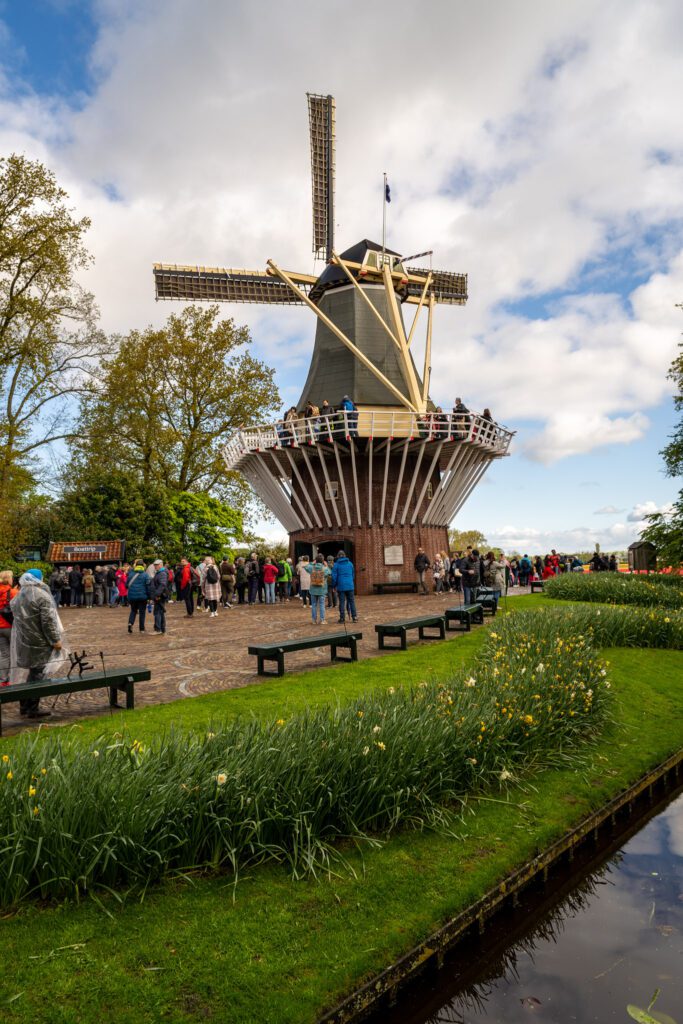
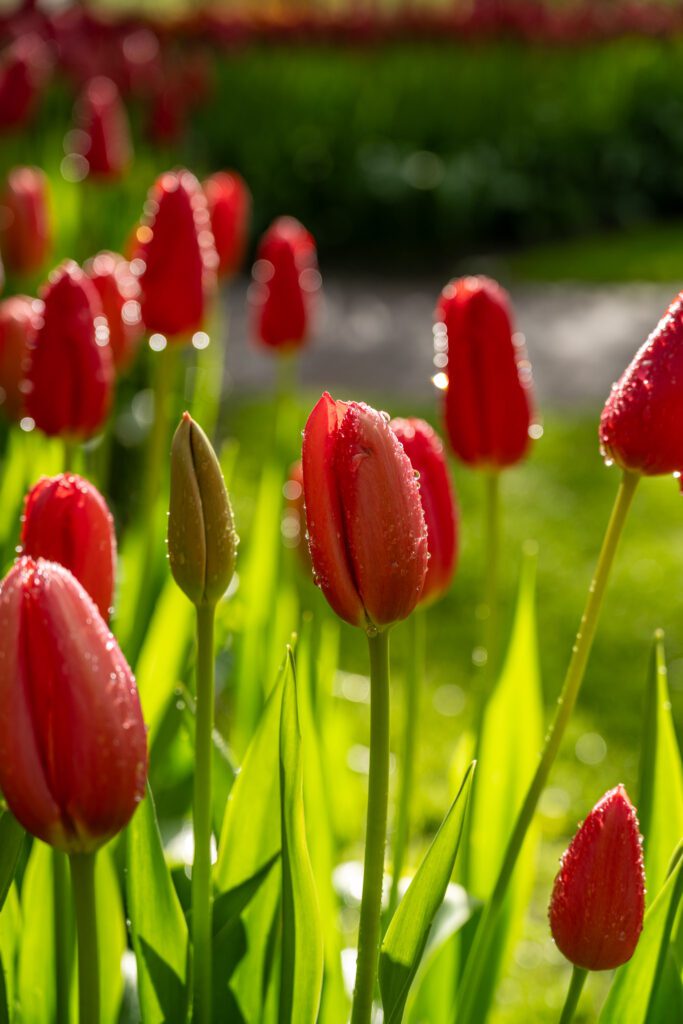
But before we talk about how to visit Keukenhof, I do want to take a second to set expectations for you.
Keukenhof is one of the biggest tourist attractions in Amsterdam. In fact, I learned on this trip that the busiest time in the city is actually the middle and end of April, when the tulips are in full bloom (I had thought it would be summer).


There are three things to keep in mind about visiting Keukenhof:
First, it is a giant tourist trap. It’s expensive. It’s crowded. And it’s 100% catering to tourists.
Second, it’s not particularly easy to get to from Amsterdam. You have to go out to the airport (or to RAI, a train station in southern Amsterdam) to catch a bus that will take you there.
Third, you should definitely pack a lunch because the food options are terrible (basically cafeteria food, but at fine dining prices).
The result is a potentially expensive and disappointing day out.
Keukenhof is a ZOO. Not in the sense that they have animals, but in the sense that it is madness in the middle of the day, with thousands of tourists visiting every single day.
But, like other major tourist attractions, there is a way to do it to have a positive experience.
My number one tip here is to get out there as early as you can. The gardens open at 8am, and I made it a priority to find a tour that would arrive there around opening after realizing that I wanted no part of the thousands of tourists that begin to arrive around 10am.
Second, you should consider a tour with transportation. It’s a much more convenient way to do it to avoid the bus situation, and it’s also a way to get out there early.
I did this tour with Chris, which got us to the gardens right around opening before whisking us away to the windmills at Zaanse Schans for the afternoon.
Overall, I would recommend a morning out at Keukenhof, but you should be prepared for what it really is and set your expectations accordingly.
If you’re looking for a different type of tulip experience, there are experiences that skip Keukenhof and take you out to less-visited tulip farms instead (like this one, which was on my shortlist).
More Amsterdam Travel Guides
Planning a trip to Amsterdam? We’ve been to Amsterdam multiple times over the past few years (including a longer two week spring trip to Amsterdam).
That time spent allowed us to dive deeper into Amsterdam’s unique history and cultural elements that most people miss, like how the mercantilism in early Amsterdam influences the food scene today.
As you get into planning your trip, you might find some of these other detailed guides we’ve written about Amsterdam helpful.
